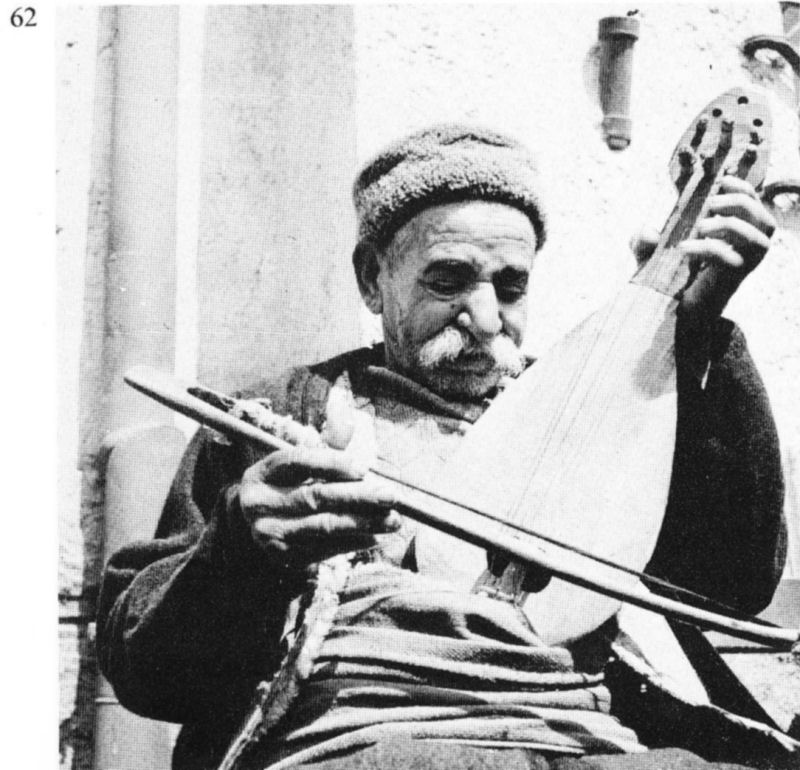1. Memorial stele of Anaxander
2, 3. Painted ceiling of Thracian tomb
6. Pliska: ruins of royal basilica
7, 8. Pliska: the Little Palace
10. Pottery-vessel with runic signs
12-16. Nagy Sankt Miklos treasure
17. Sofia: church of St Sofia (Sophia)
18. Great Preslav: royal palace
19, 20. Great Preslav: Round or Golden Church
21. Great Preslav: carved flagstone
22. Silver goblet of Great Zhupan Sivin
23, 24 Stone slabs with bas-reliefs
26. Courtyard of the Rila monastery
27. St John of Rila and St John the Theologian
29. Assen’s Castle, church of the Petrich Virgin
30. Nessebăr: church of St John the Baptist
31. Nessebăr: church of St Stephen
32. Nessebăr: church of the Pantocrator
34. Crags and medieval fortress at Belogradchik
35. Bachkovo monastery: fresco from ossuary
36-38. Murals from Boyana church
39. Cliffs near Ivanovo, with rock-cut refuges
40. Ivanovo: rock-cut monastery church
41, 42. Ivanovo: frescoes in monastery church
43. Self-portrait by Zakhari Zograf
44. Fresco by Zograf in Bachkovo monastery
45. Preslav: icon from Patleina monastery
47. Icon of Virgin and Child, from Nessebăr
48, 50. Paintings from Gospel Book of Tsar Ivan Alexander
49. Miniature from chronicle of Constantine Manasses
51. The Rila monastery: carved doors from Khrelyo’s Tower
52. Gold belt tag from Great Tărnovo
53. Gold belt buckle from Great Tărnovo
54. Medallion from Great Tărnovo
55. Silver coin of Tsar Ivan Alexander
56. Bowl in sgraffito ware, from Great Tărnovo
57. Ceiling of the Daskalov House, Tryavna
58, 59. Rozhen monastery: details of Little Iconostasis
60. Pazarjik: detail of iconostasis of church of the Virgin
61. Kukeri dancers and mummers
The majority of the plates, and many of the line drawings, are reproduced from photographs and from field reports kindly supplied at various times by the Bulgarian Committee for Friendship and Cultural Relations with Foreign Countries, Dondukov Boulevard, Sofia. Grateful acknowledgment is accorded to this generous and helpful body. In addition, warm thanks are extended to the undermentioned persons and institutions for individual photographs (numerals refer to the plate numbers).
Barber Institute of Fine Art, University of Birmingham, courtesy of the Director and Mr Timothy J. Boatswain: 55; the Trustees of the British Library: 48, 50; Courtauld Institute of Art, University of London, and Dr Robin Cormack: 29-32; Karadimchev Studio, Sofia, courtesy Mrs Elka Bakalova: 35; Kunsthistorisches Museum, Vienna: 12-16; Mrs Mercia MacDermott: 61, 62; Monastery Museum, Rila: 46, 51; National Archaeological Museum, Sofia: 37, 38, 47; Preslav Museum: 18, 22, 45; Regional Historical Museum, Great Tărnovo, courtesy Dr Khristo Nurkov: 52-54, 56; Varna Archaeological Museum and Mr Alexander Kuzov: 9-11, 33, 34.
160
![]()
1. Memorial stele of Anaxander, from Sozopol (Apollonia). Discovered in 1895, this marble stele is dated variously to the late sixth or early fifth century BC, and is a fine specimen of imported Greek work. Anaxander leans on his stick, and gazes down at his dog, which stretches up on its hind legs to accept something from his hand. According to Hoddinott (Bulgaria in Antiquity, p. 34), there is a stylistic resemblance to the stele from Orchomenos by Alexenor of Naxos. The treatment of the hair and drapery recall the Late Archaic style, but the peaceful realism and rhythmic composition bring it within the Classical tradition. Height 2.40 m. National Archaeological Museum, Sofia.
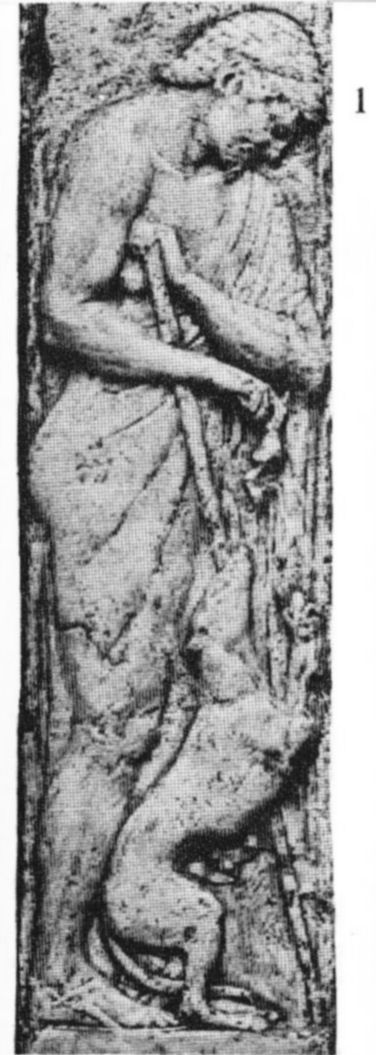
2, 3. Portions of the painted ceiling of the Thracian tomb at Kazanluk, in the Valley of the Roses. The tomb - that of an individual of princely rank and his wife - was discovered by chance in 1944, by soldiers digging an air-raid shelter in what was thought to be a natural hillock, 7 m. high and 40 m. in diameter. The brick-built, beehive-shaped inner chamber has a diameter of 2.65 and a height of 3.25 m. The paintings are in four colours, white, black, red and yellow. The scenes depicted in the dome form a composition of serene dignity and restrained sorrow, as well as providing insight into daily life in Bulgaria in the Hellenistic era. Late fourth or early third century BC.
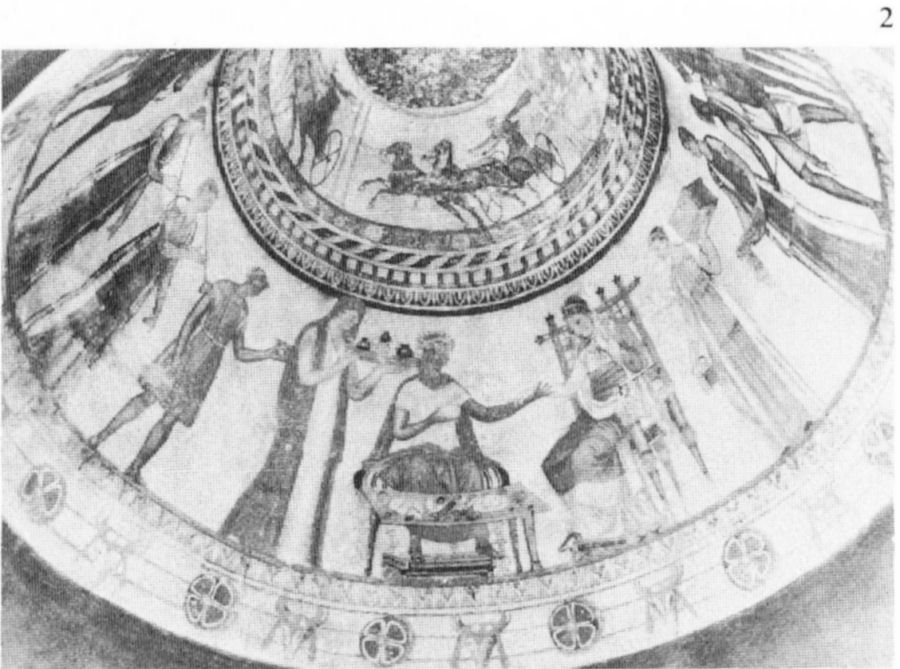
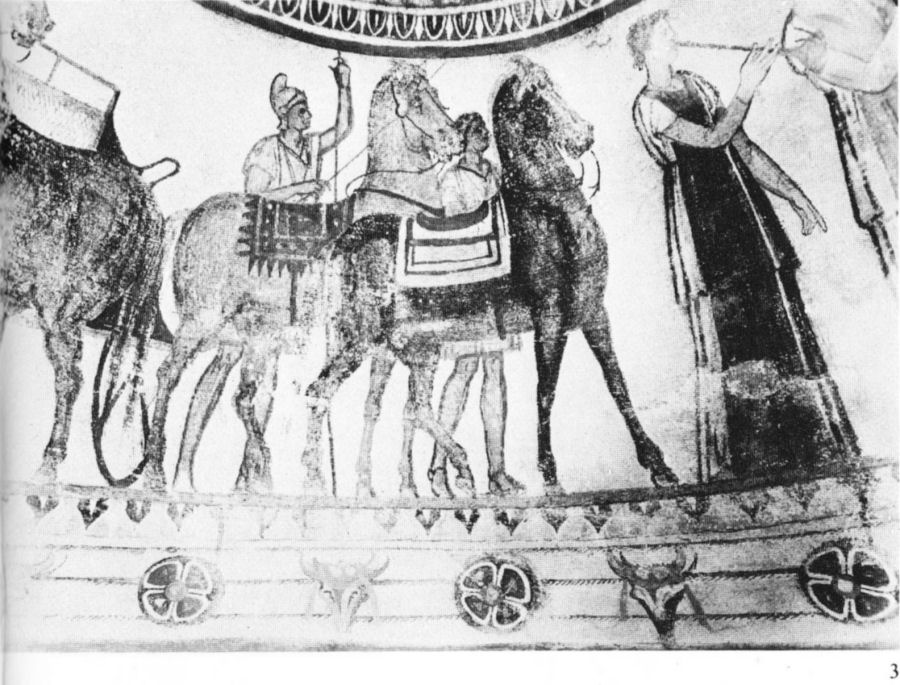
4, 5. The Madara Horseman. General view of the cliff, with the carving, and close-up showing detail of the relief and the adjoining Greek inscriptions. These narrate important events in early Bulgarian history. The height of the relief is almost 3 m.; it stands over 25 m. above ground level. The whole work is an apotheosis of the might of the Sublime Khan of the Bulgars, and recalls prototypes in Sasanian Iran.
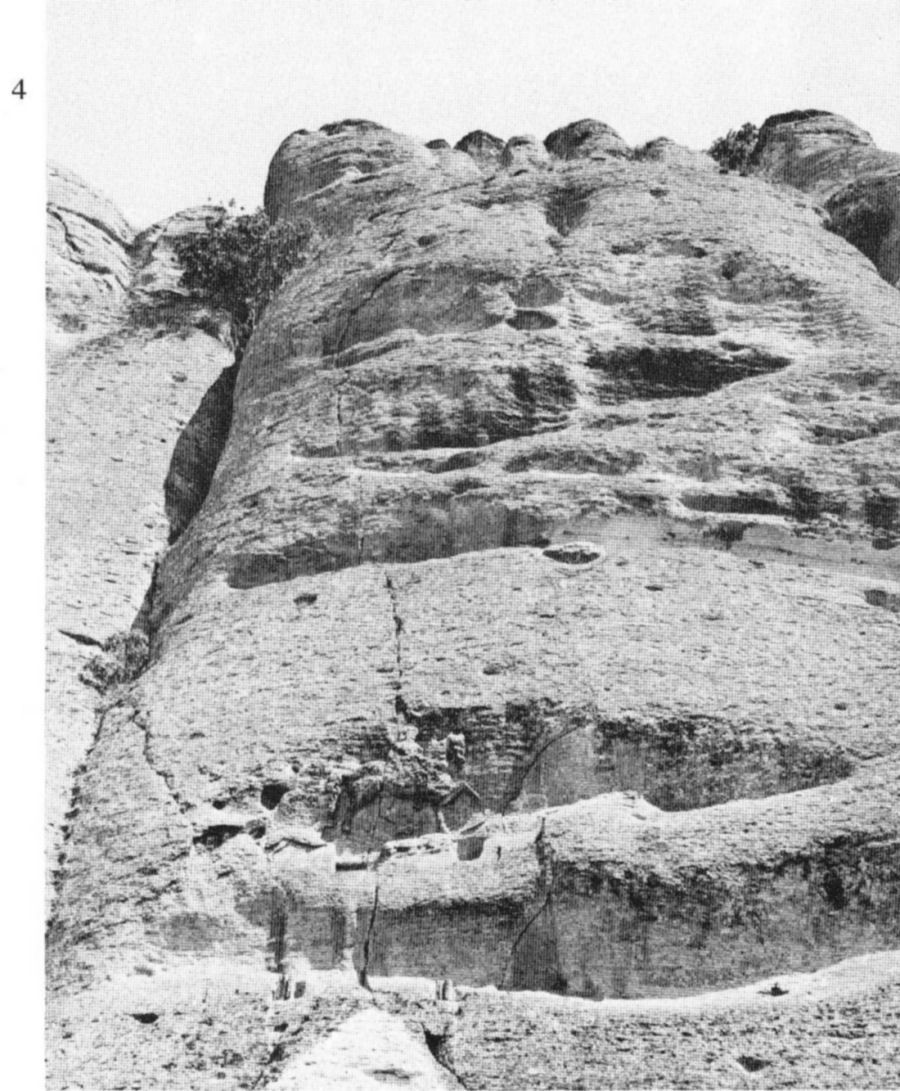
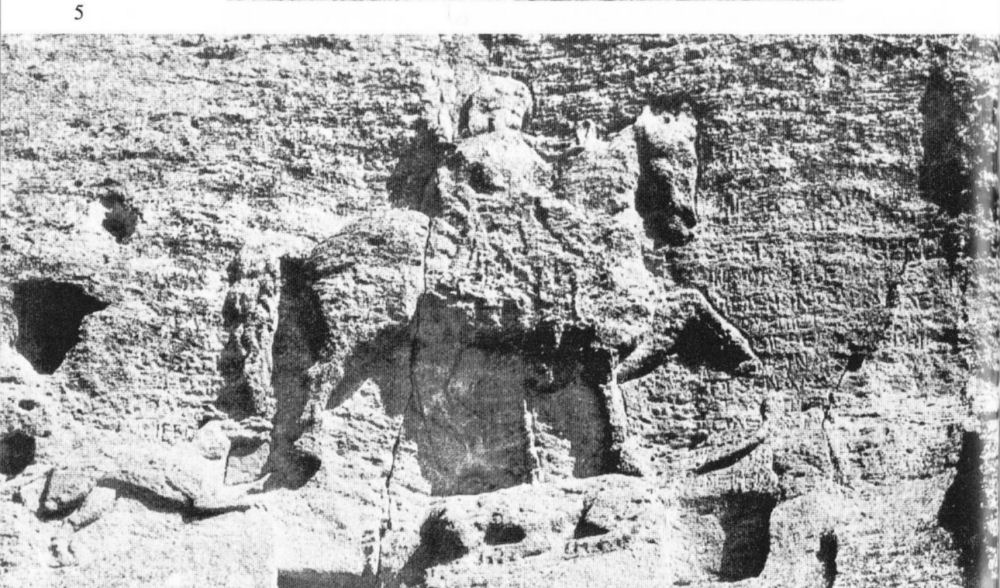
6. Pliska. Ruins of the royal basilica of Prince Boris-Michael, late ninth century. Including the cloistered atrium, the building was 99 m. long, and almost 30 m. wide.
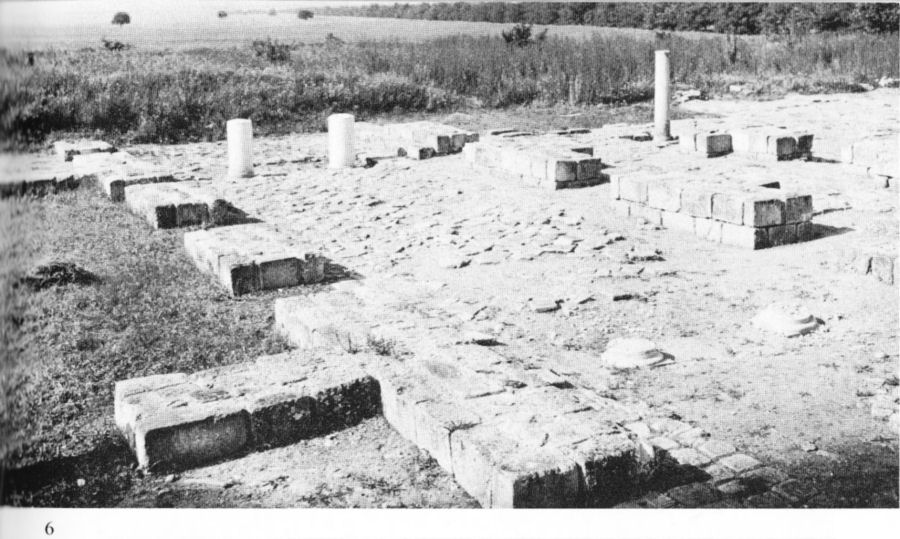
7. Pliska. The Little Palace. Usually dated to the early eighth century, the Little Palace was a two-storey structure, with four large halls and a number of smaller rooms on the ground floor.
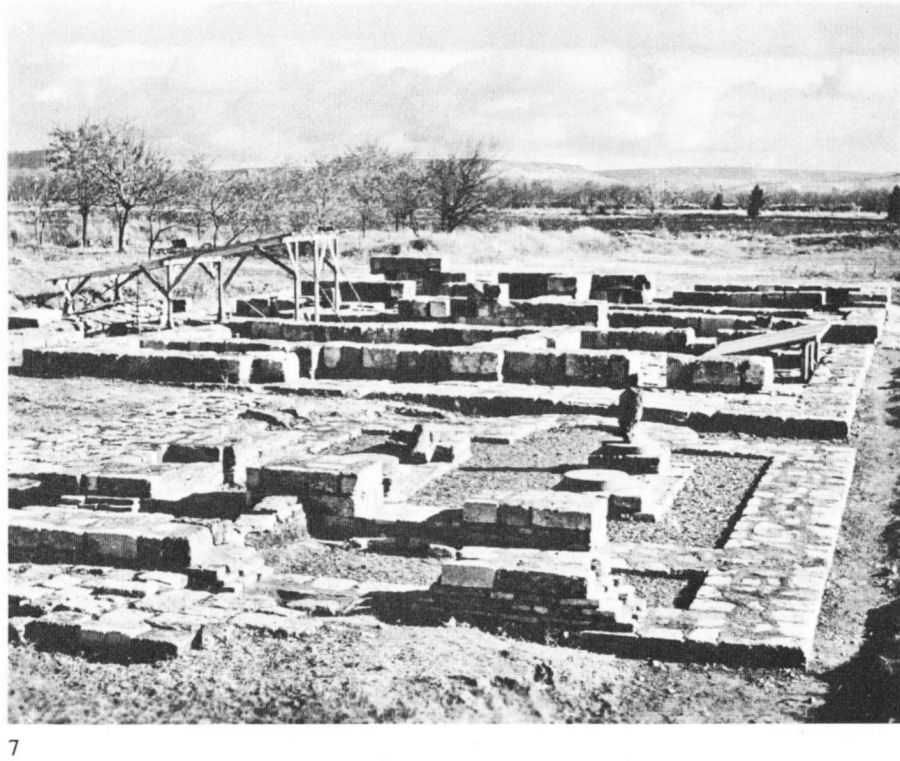
193
![]()
8. Pliska. The Little Palace, heating installations. In both the Large Palace of Khan Omurtag (816-31) and the earlier Little Palace, the remains of bathrooms, hypocausts and other heating equipment were found. The discovery of extensive piping shows that the city of Pliska was well supplied with running water. Some scholars maintain that the proto-Bulgars were only ‘squatters’ on an earlier Roman or Byzantine site. However, Professor D. Obolensky (The Byzantine Commonwealth, p. 50) mentions that in AD 580, Bayan, khagan of the Avars, had baths built by Byzantine architects near Sirmium. Baths were also installed by ‘Umayyad caliphs in Syria a century later. The building of public and palace baths was a status symbol of successful dynasts in the Near Eastern and Byzantine spheres of influence throughout this period.
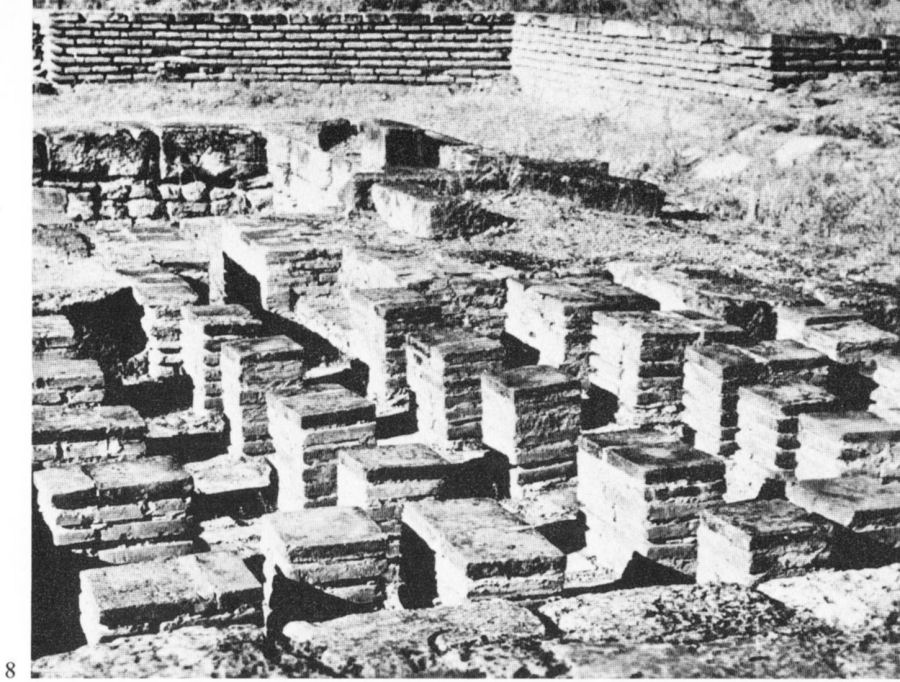
9. Stone inscribed with runic signs, from Biala, south of Varna. Proto-Bulgar period. Varna Archaeological Museum.
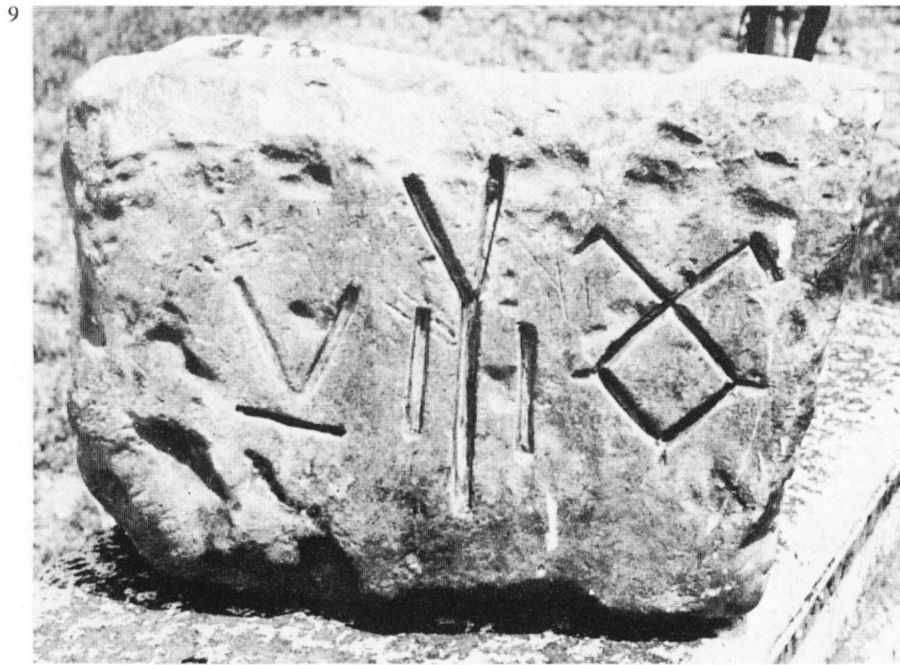
10. Proto-Bulgar pottery vessel, inscribed with runic signs. Height 26 cm. Varna Archaeological Museum.
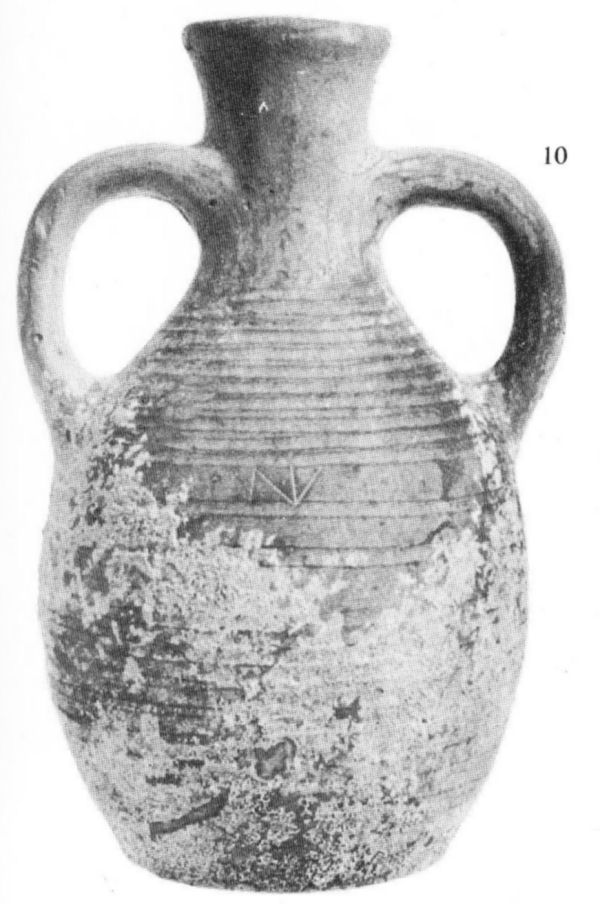
11. Slavonic clay cooking-pot from Devnya, the former Roman Marcianopolis, in the hinterland of Varna. Eighth-ninth century. Height 16 cm. Varna Archaeological Museum.
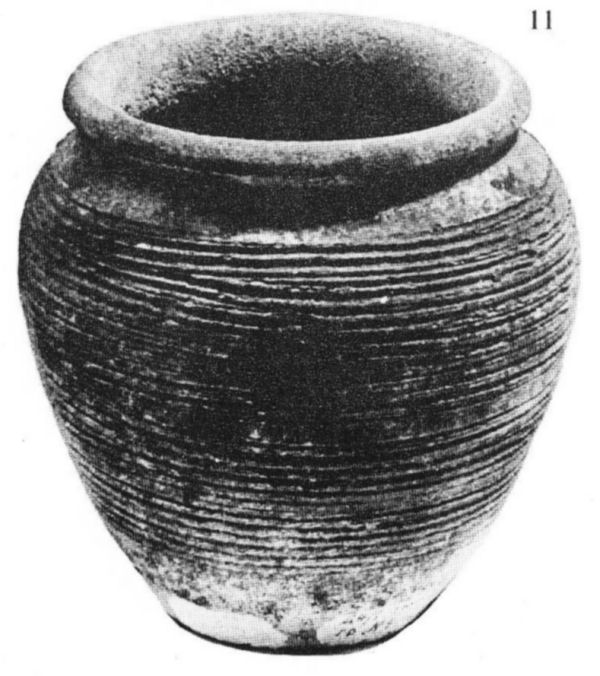
12. Gold treasure of Nagy Sankt Miklos (or Nagyszentmiklos), discovered in 1799 in the Romanian Banat. One of a pair of zoomorphic drinking cups or small bowls. Overall height 11 cm.; length 12.2 cm.; width 7 cm. Weight 284 gr. 20 1/2 carats. Ref.: Mavrodinov, Le Tresor protobulgare de Nagyszentmiklos, 1943, nos. 13-14. Ninth century AD. Vienna: Kunsthistorisches Museum.
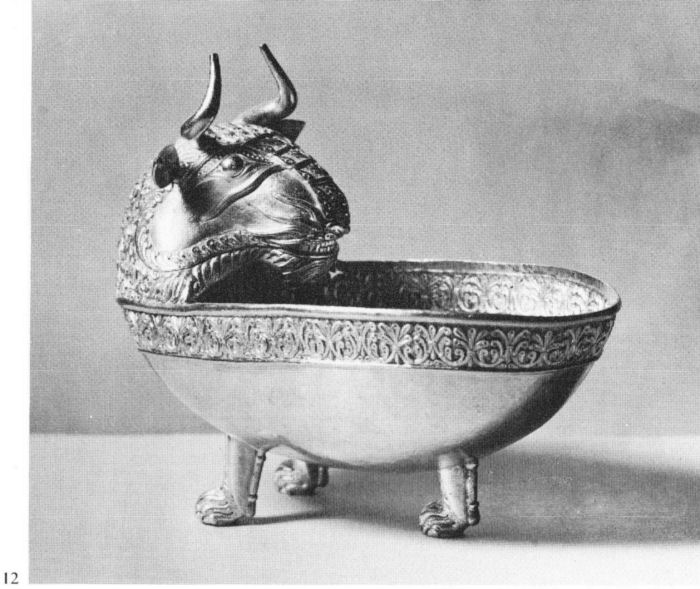
13. Nagy Sankt Miklos treasure. Goblet decorated with six circular medallions, depicting various kinds of hippocampi or marine monsters. Height 5.7 cm.; diameter of mouth 6.2 cm.; diameter of base 5.3 cm.; body diameter 9 cm. Weight 217.5 gr- 22 carats. Mavrodinov, no. 19. Ninth century. Vienna: Kunsthistorisches Museum.
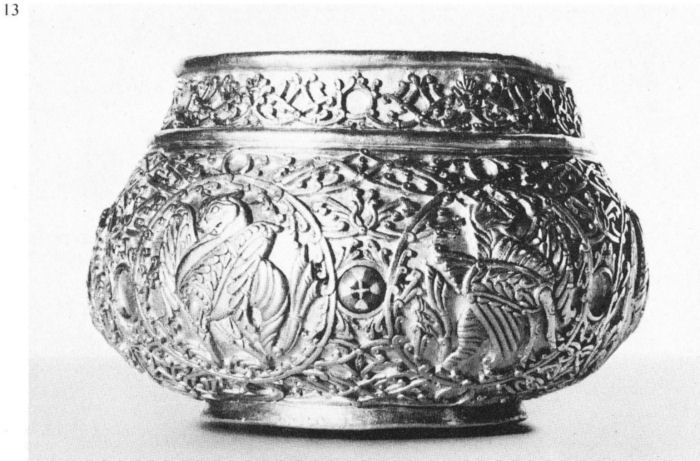
14, 15. Nagy Sankt Miklos treasure. Gold ewer (Mavrodinov, no. 2) and one of the four repousse medallions which form part of its decoration. It shows a royal hunter mounted on a fantastic beast with a griffin’s body and the head of a bearded man. The hunter has turned round in the saddle, and is shooting with his bow at a leaping panther. Though imbued with the ferocious spirit of the barbarian nations, there are features strongly recalling Sasanian royal hunting scenes.
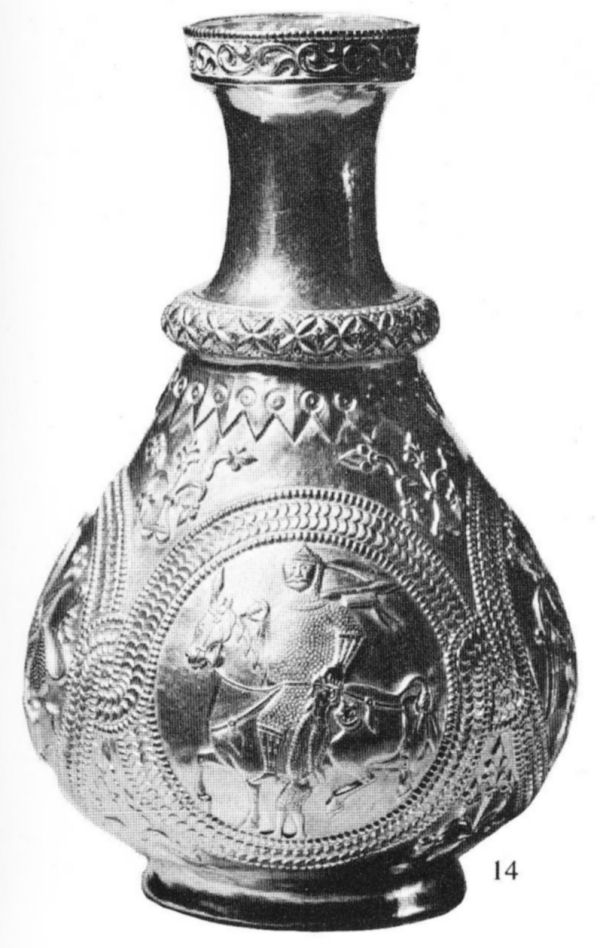
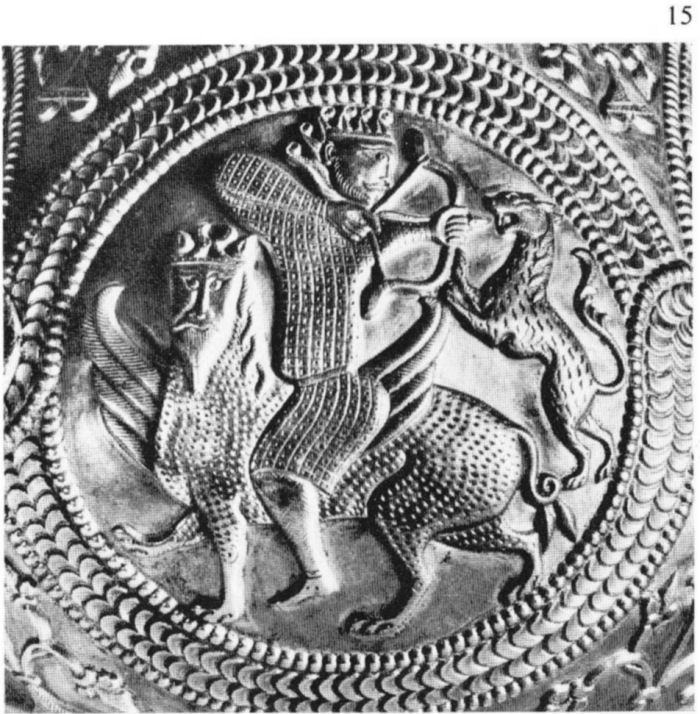
194
![]()
Height of ewer 22 cm.; overall diameter 14.5 cm.; diameter of base 8.4 cm.; diameter of mouth 5.8 cm. Weight 608 gr. 18 carats. Vienna: Kunsthistorisches Museum.
16. Nagy Sankt Miklos treasure. Gold ewer with handle. The medallion (there is a matching one on the other side of the vessel) shows the abduction of Ganymede by Zeus, disguised as an eagle. Ganymede, it will be remembered, was to serve as cup-bearer to the gods. The ewer has a flattened, ovoid contour. (Mavrodinov, no. 7.) Height 23 cm.; overall diameter 13 cm.; diameter of base 9 cm.; diameter of mouth 8.8 cm. Weight 733 gr. 21 carats. Vienna: Kunsthistorisches Museum.
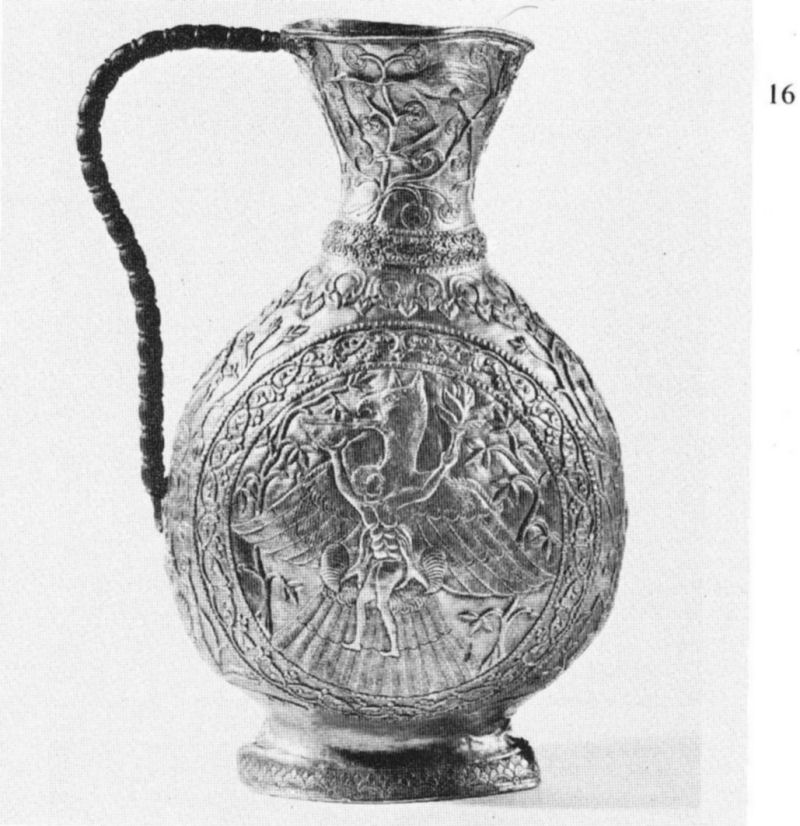
17. Sofia. Church of St Sophia (in the foreground). Several times destroyed by barbarian invaders, the present brick-built church is probably the fifth to have been erected on this central site of the present Bulgarian capital. The city (formerly known as Serdica, then Sredets) takes its name from this church. Total length of present edifice, often ascribed to the reign of Justinian (6th century) is 46.5 m. See Hoddinott, Bulgaria in Antiquity, pp. 269-77, with diagrams, and plans of still earlier structures.
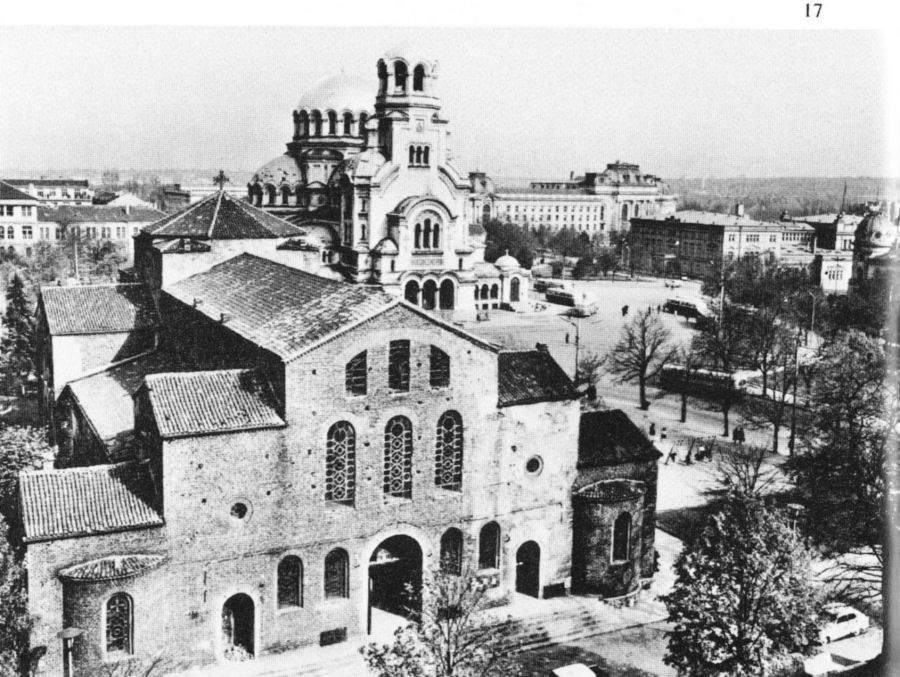
Behind, centre, can be seen the ostentatious golden-domed cathedral of Alexander Nevsky, built to celebrate the liberation of Bulgaria by Russia in 1877; in the crypt is a magnificent display of medieval Bulgarian art treasures.
18. Great Preslav. Royal palace of Tsar Symeon (893-927). Ruins of the reception hall, seen from northwest.
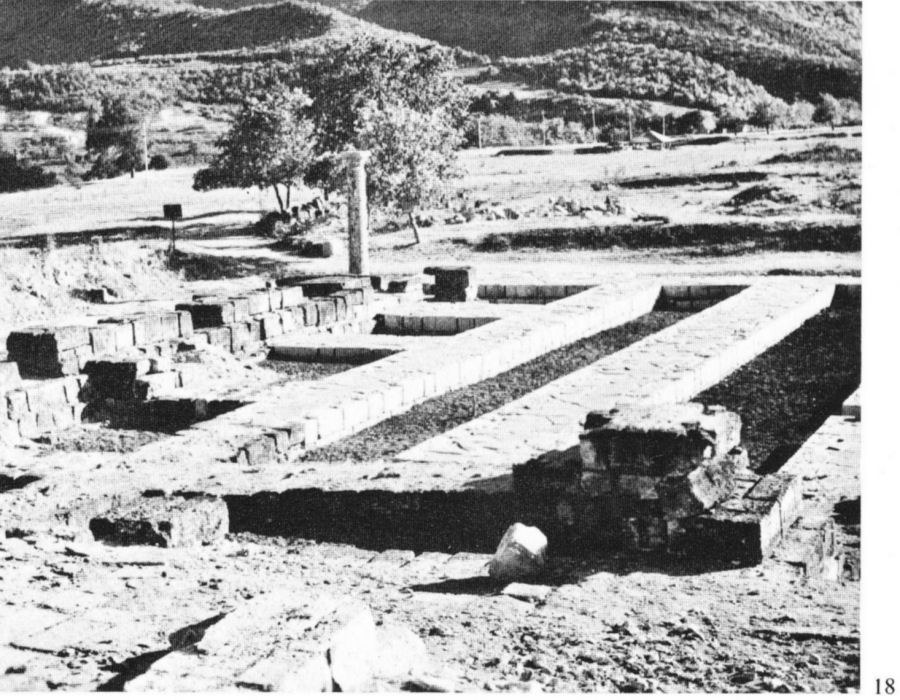
19. Great Preslav. Round or Golden Church of Tsar Symeon, c. AD 900. View of the ruins, showing the supporting wall.
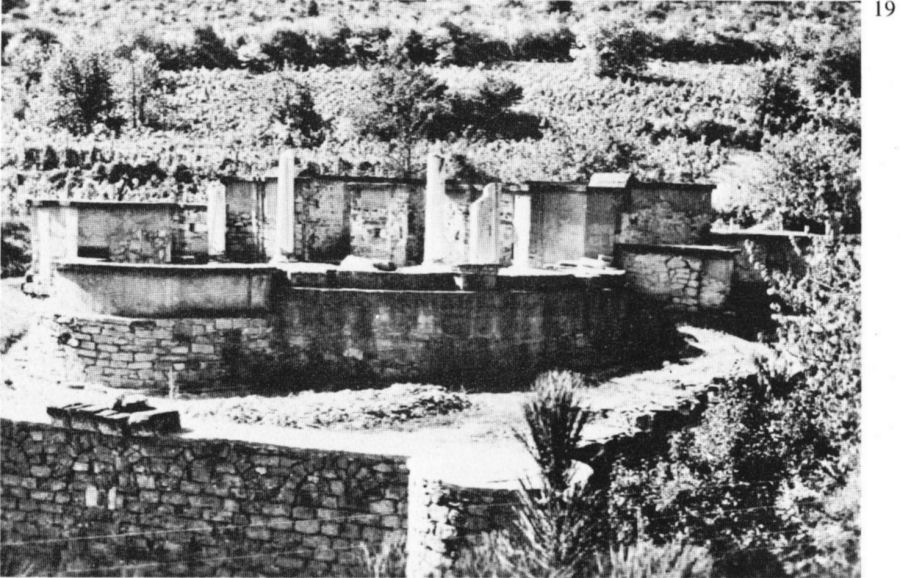
20. Great Preslav. Round or Golden Church of Tsar Symeon. Detail of marble capital, showing a hare. There are parallels with contemporary sculpture in Armenia and Georgia. Height 24 cm. Preslav Museum.
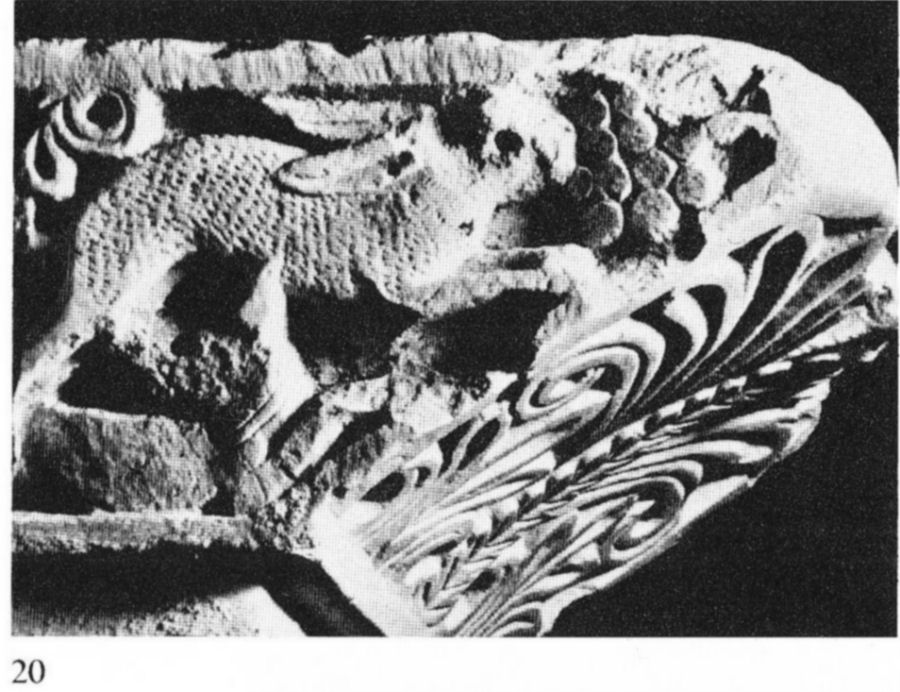
21. Great Preslav. Carved decorative flagstone from the palace area, c. AD 900. 54 cm. X 96 cm. Marble. National Archaeological Museum, Sofia.
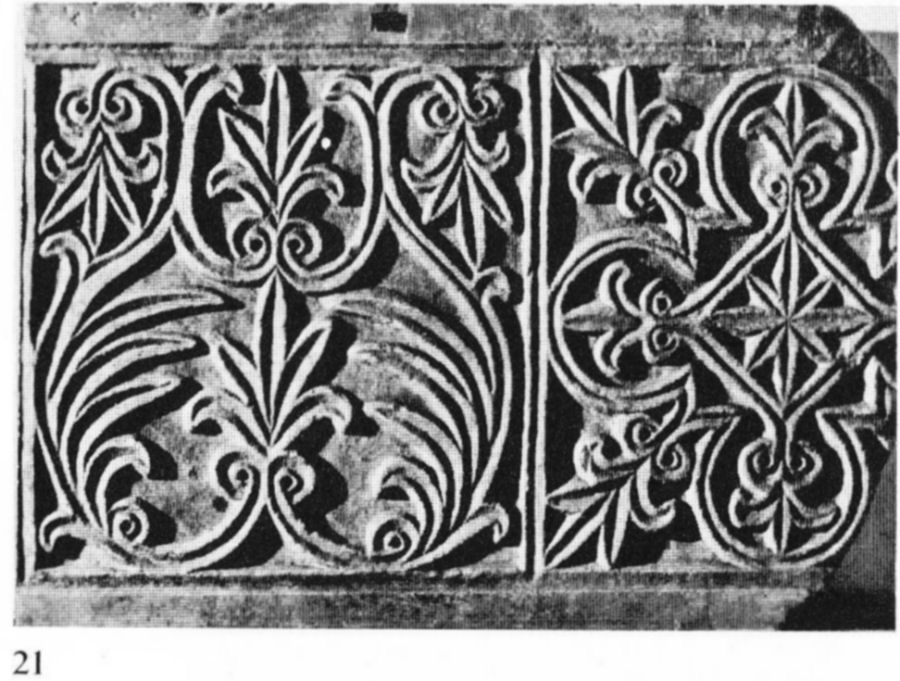
22. Silver goblet of the Great Zhupan Sivin, a high official at the Bulgarian court. Discovered in 1963 in a grave immediately north of Preslav. The goblet has a commemorative inscription in Greek on the base. c. AD 900. Height 5.2 cm.; maximum diameter 9.2 cm.; diameter of base 5.2 cm. Preslav Museum.
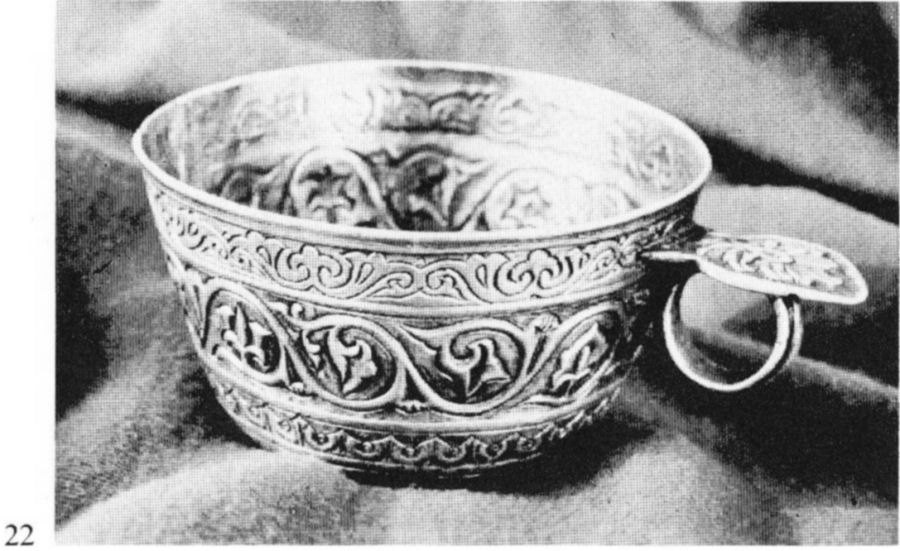
195
![]()
23, 24. Stone slabs with bas-reliefs, from Stara Zagora. One shows a lion, perhaps a symbol of the might of the Bulgarian state; the other, a lioness and her cub. Probably tenth century. National Archaeological Museum, Sofia.
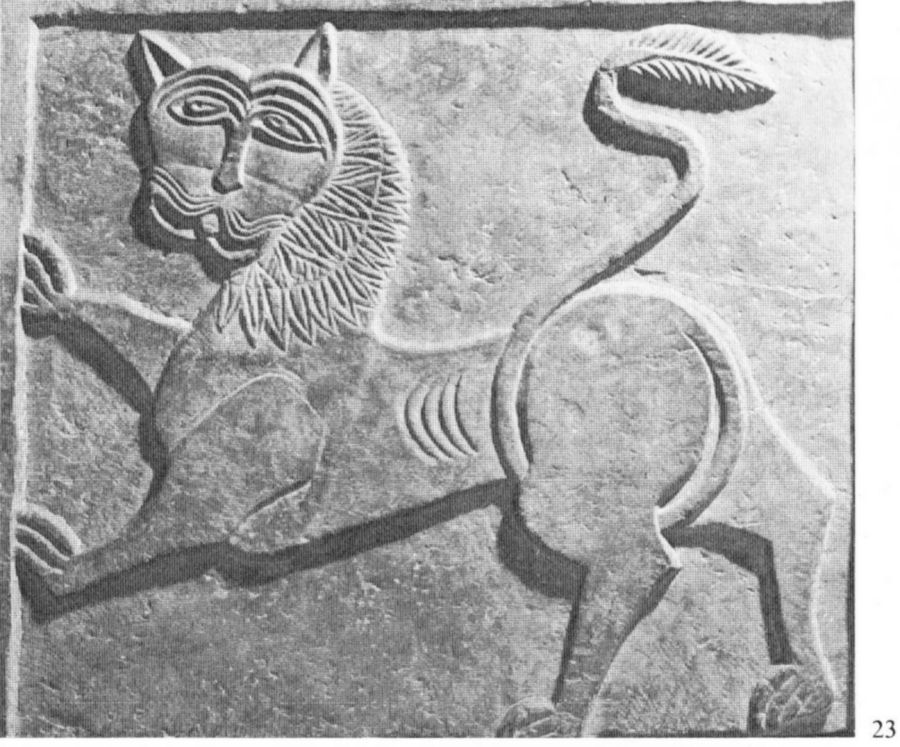
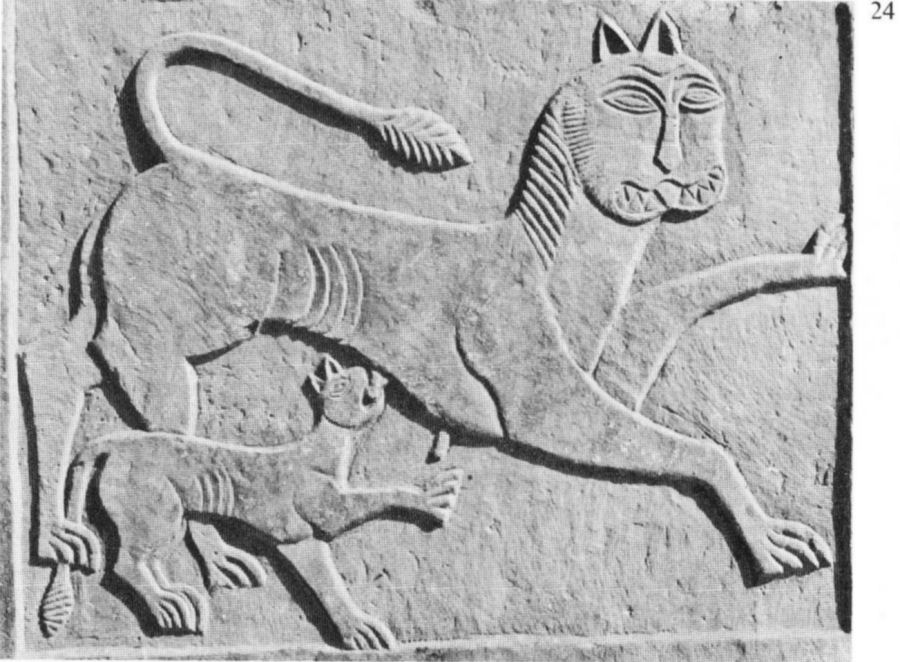
25. General view of the Rila monastery. The sanctuary was founded by St John of Rila (876-946), who originally lived in a hollow tree near by until the tree collapsed. Apart from Khrelyo’s Tower, the original buildings were destroyed in a fire in 1833. Thus, the majority of the monastery buildings date from 1834 onwards.
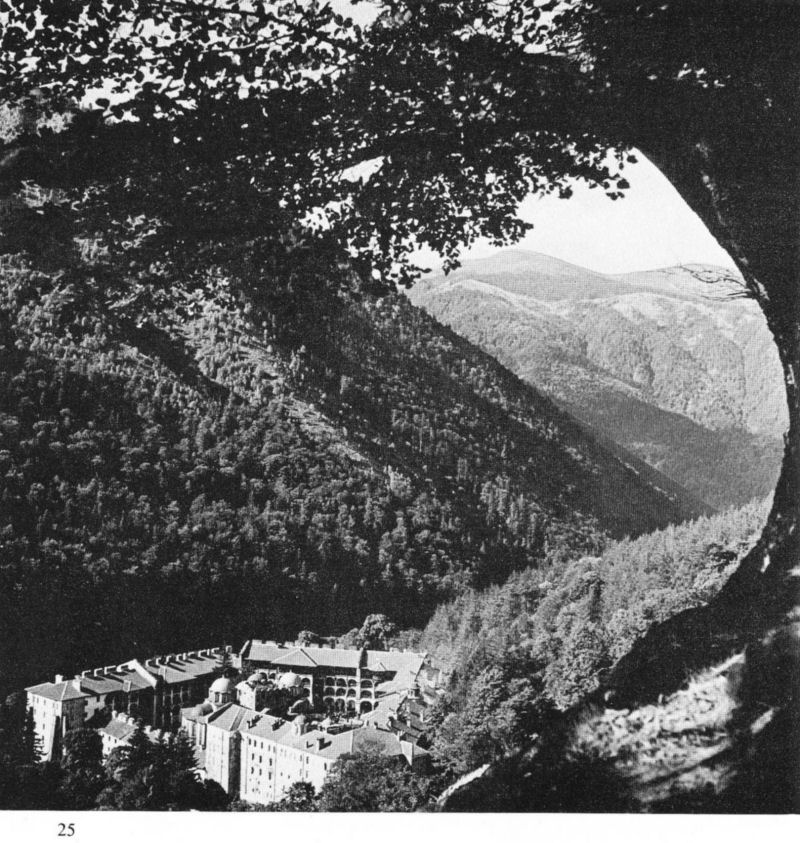
26. The Rila monastery. Main courtyard, showing the massive Khrelyo’s Tower (1335) with its crenellated parapet, designed for defence against invaders.
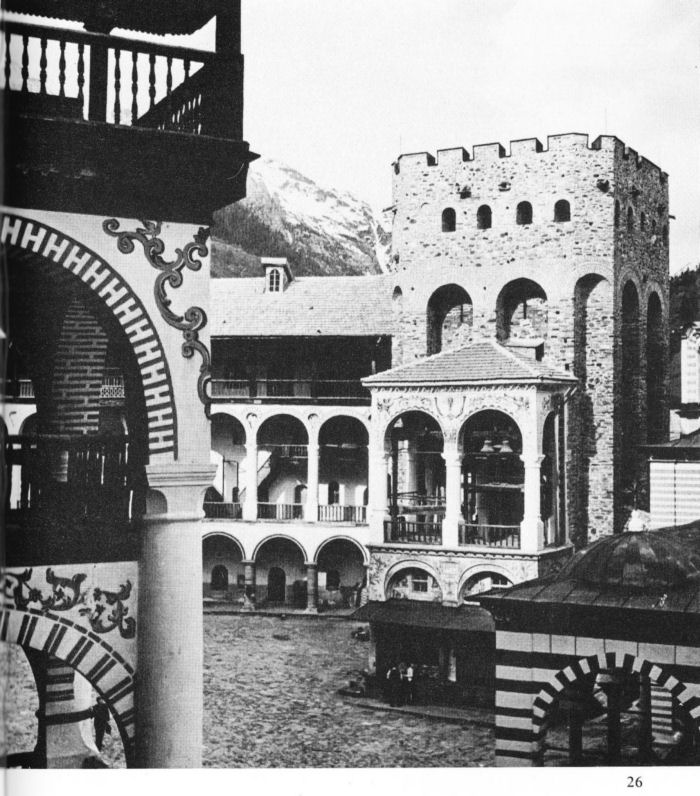
27. Nineteenth-century etching by an unknown artist, showing St John of Rila (left) together with St John the Theologian.

28. View of the main courtyard and principal church of the Bachkovo monastery. Most of the present monastery buildings date from the seventeenth century. The monastery was founded in 1083 by the Byzantine general Gregory Bakuriani and his brother, Abasi, and originally reserved for monks from Georgia in the Caucasus.
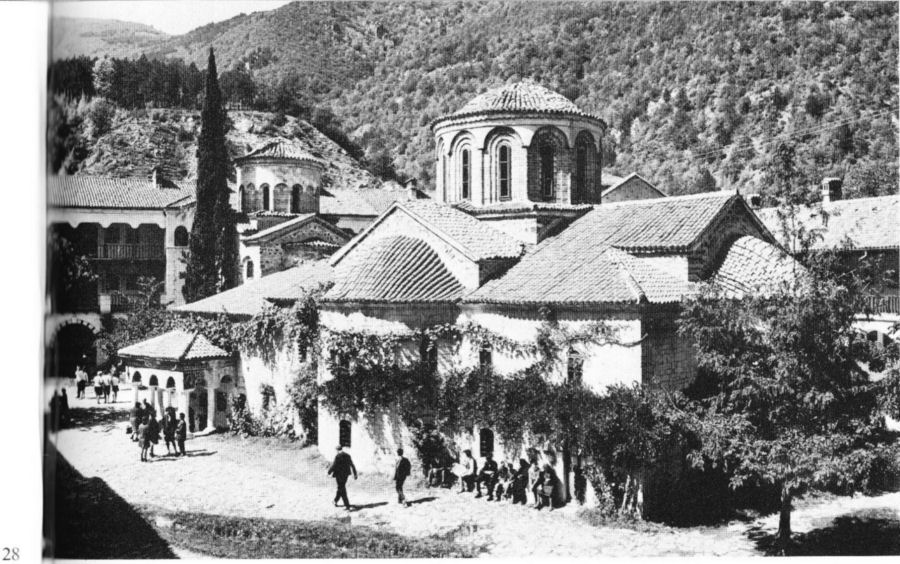
29. Two-storeyed church of the Petrich Virgin at Assen’s Castle, between Assenovgrad and the Bachkovo monastery. Twelfth century. Overall dimensions 18 m. x 7 m.
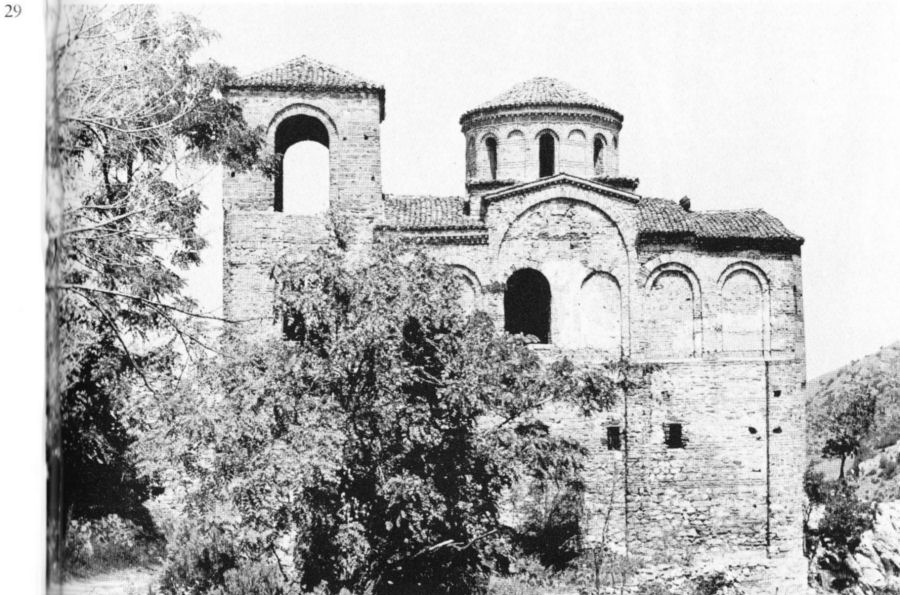
30. Nessebăr. Church of St John the Baptist, dating from the tenth-eleventh century. View from southeast. Built of undressed stone, the church is cruciform in plan, 12 m. x 10 m.,with tall cylindrical drum and three aisles. For this and the two following items, reference should be made to Veyrenc, Nagel’s Encyclopedia-Guide to Bulgaria, pp. 292-304.

31. Nessebăr. Church of St Stephen. Detail of the upper section of the main apse, from outside. This basilica is also known as the Nova Mitropolia or New Metropolitan church, and has a series of fine medieval frescoes. Overall dimensions 15 m. X 9 m.
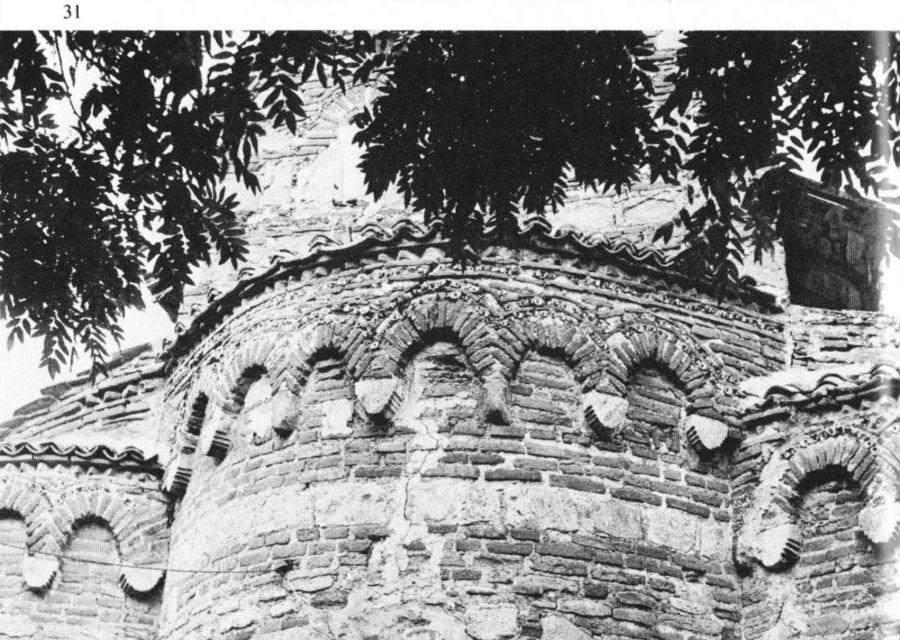
32. Nessebăr. Fourteenth-century church of the Pantocrator. The alternate layers of red brick and cut stone help to produce a splendid effect. Overall dimensions 16 m. X 6.70 m.
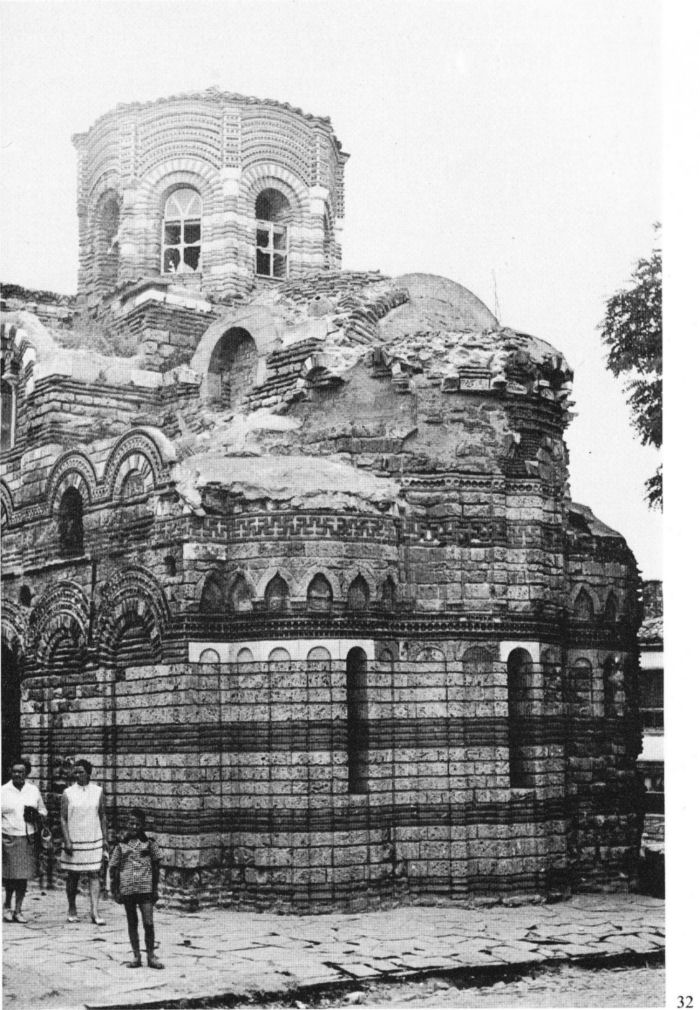
196
![]()
33. Vidin, on the river Danube. Baba Vida castle. The fortifications date originally from the thirteenth century, but were rebuilt in Ottoman times.
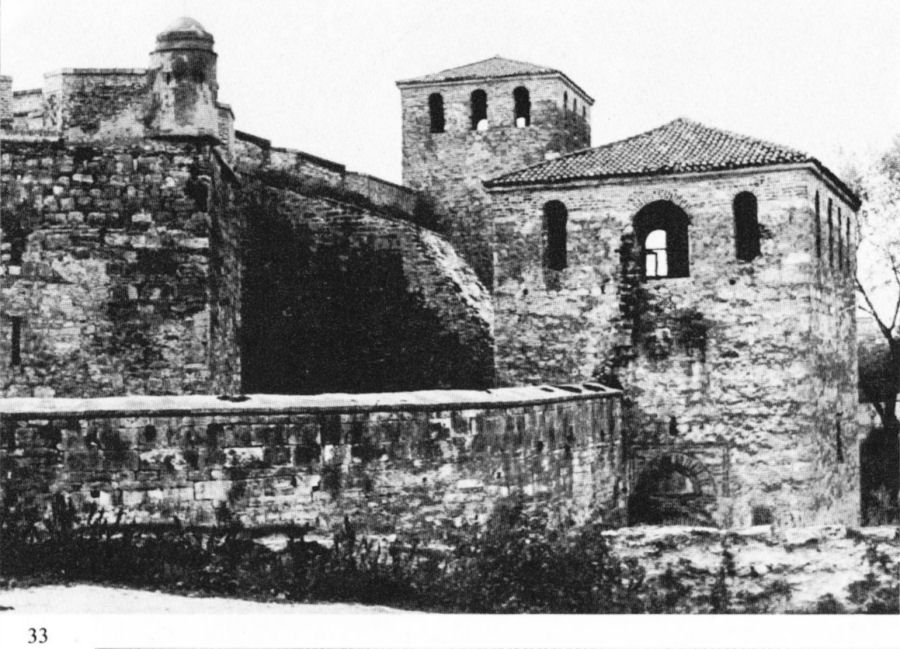
34. The crags of Belogradchik, in northwestern Bulgaria, showing part of the medieval fortress, extended in Ottoman times.
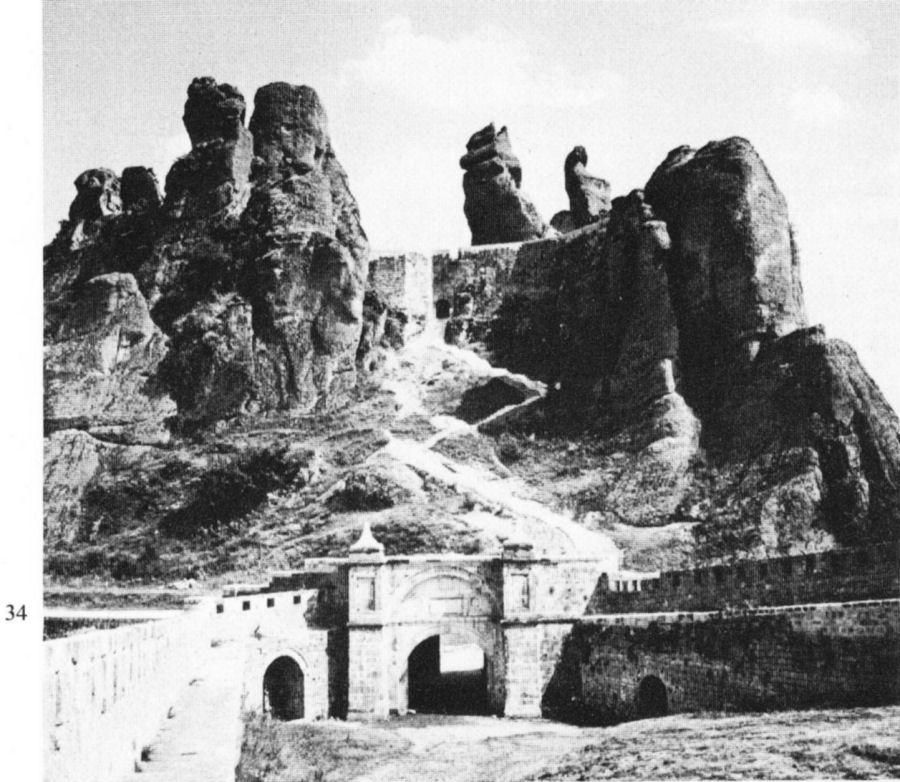
35. Bachkovo monastery. Detail from a set of mural paintings, dating from about AD 1100, in the ossuary. This fresco of the Virgin Mary forms part of the Deesis scene, in the central apse.
36. Boyana church near Sofia. Part of the cycle of mural paintings, executed in 1259: detail from the section depicting Christ’s descent into Hell. Just risen from the dead, the three prophets David, Melchizedek and Solomon are shown standing in their sarcophagi, while St John the Baptist behind them holds an open scroll with prophetic utterance about the coming of Christ.
37. Boyana church murals: Christ as Pantocrator.
38. Boyana church murals: St Theodore Tyro.
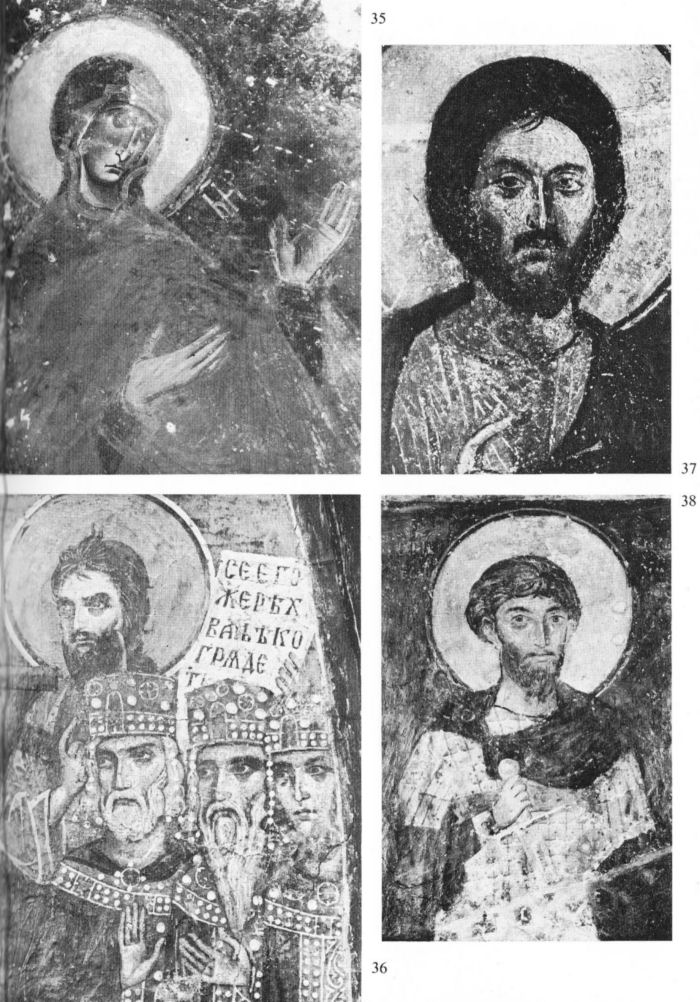
39. Cliffs beside the river Rusenski Lom, in northeastern Bulgaria, close to the village of Ivanovo. During the fourteenth century, in the reign of Tsar Ivan Alexander, the Turkish peril forced the monks to take refuge in rock-cut churches and cells, perched high up in cliff faces such as these.
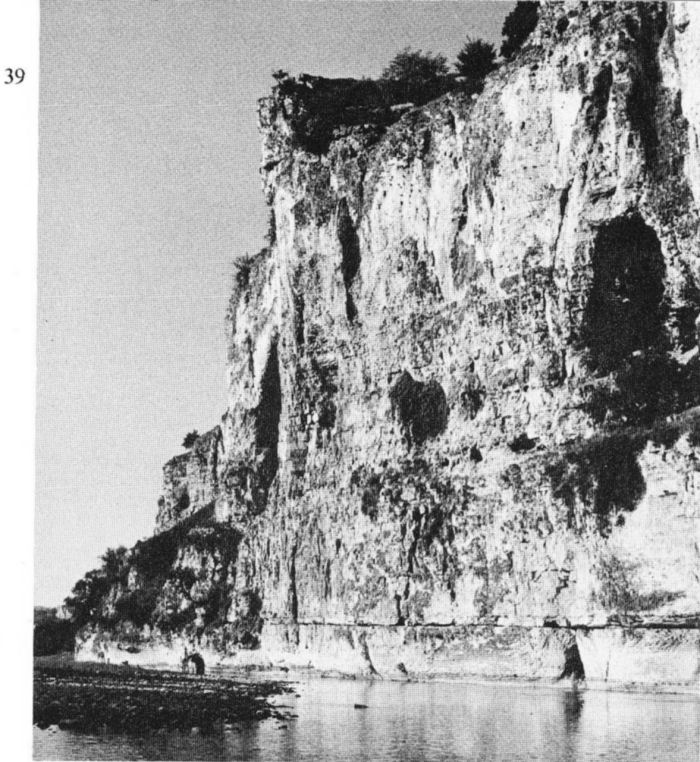
40. Ivanovo. Entrance to the rock-cut monastery church.
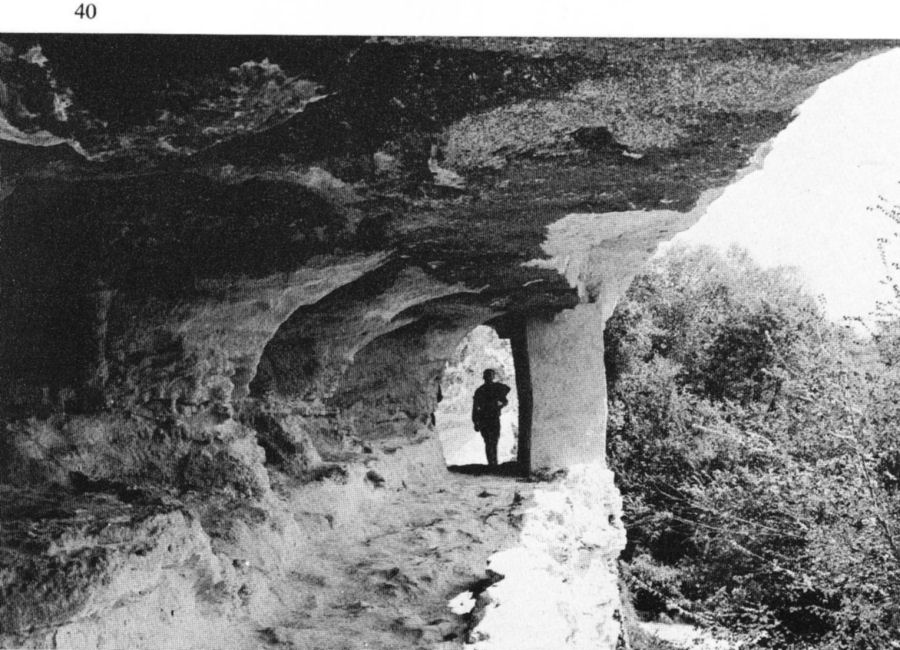
41. Ivanovo. Detail of the cycle of fourteenth-century frescoes in the monastery church. One section shows the events of Holy Week and Christ’s Crucifixion and Resurrection. This is part of the scene of Christ washing the feet of the Disciples. Despite the worn state of the fresco, we can still discern the subtle and skilful treatment of the Disciples’ robes, and the effect of bustle and bewilderment as the Disciples protest their unworthiness to receive Christ’s ministrations.
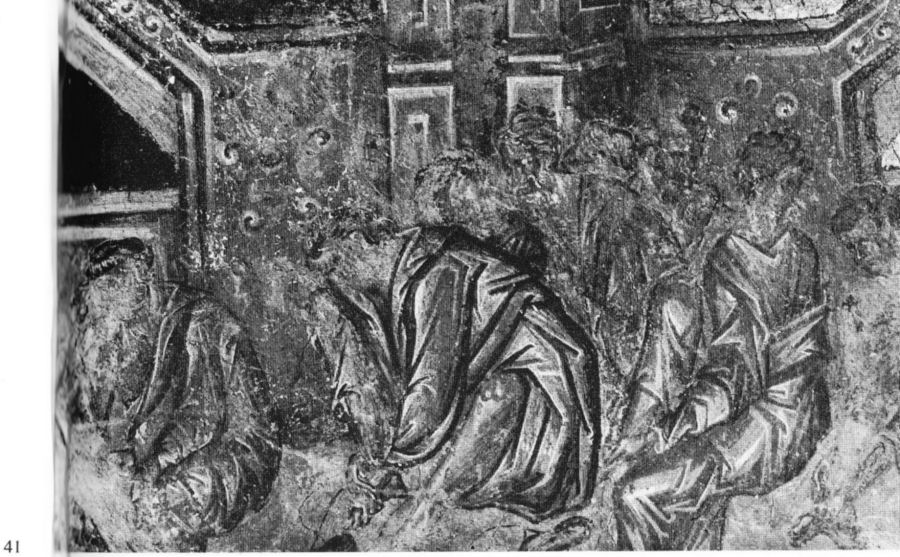
42. Ivanovo murals: Judas Iscariot (right) returns the blood money to the Pharisees (Gospel of St Matthew, XXVII, 3-5). The impact of this scene is heightened by the use of sinister dark green shades. The agitated figure of the repentant Judas is contrasted with the complacent figures of the seated Pharisees. Note the interesting treatment of the temple buildings in the background. The panel measures 93 cm. x 148 cm.
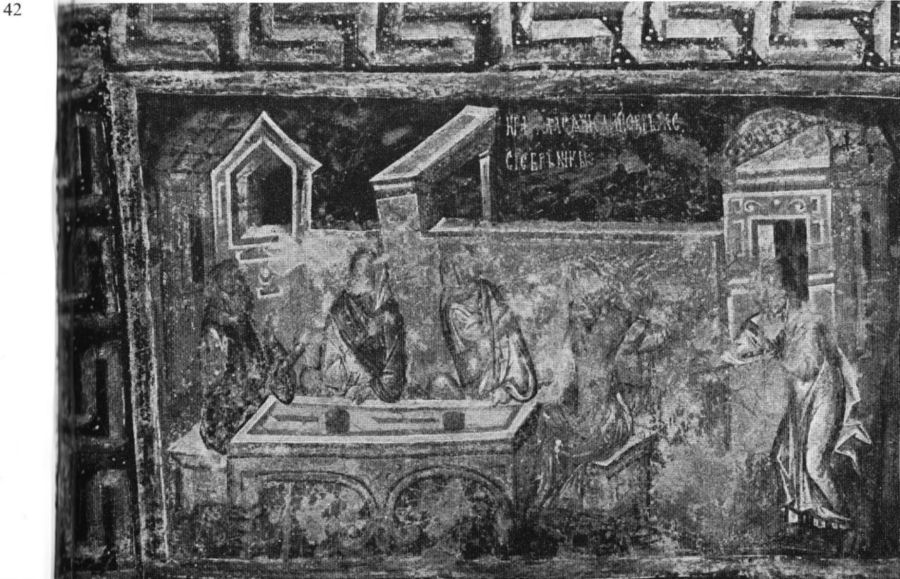
197
![]()
43. Self-portrait of the illustrious painter Zakhari Zograf (1810-53), one of the greatest figures of the Bulgarian renaissance of the nineteenth century. His arresting and often humorous murals adorn the chief monastery churches of Bulgaria, also the Great Lavra of St Athanasius on Mt Athos. This self-portrait dates from 1840, and is painted on the church of St Nicholas, Bachkovo.
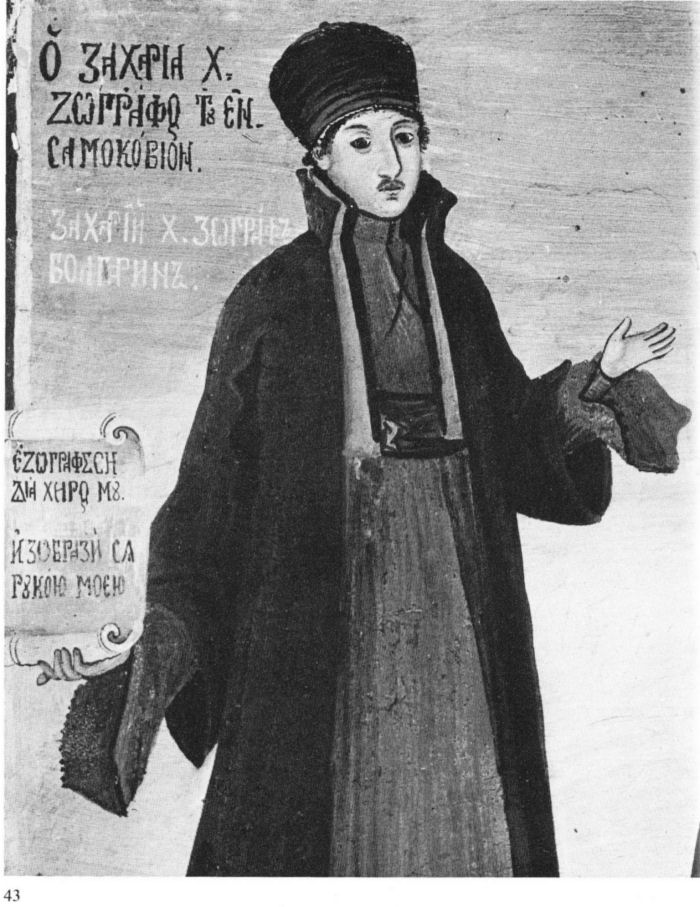
44. Bachkovo monastery: church of the Archangels. Fresco by Zakhari Zograf, ‘The rich man’s death’, part of a group of murals in the porch. Painted in 1841.
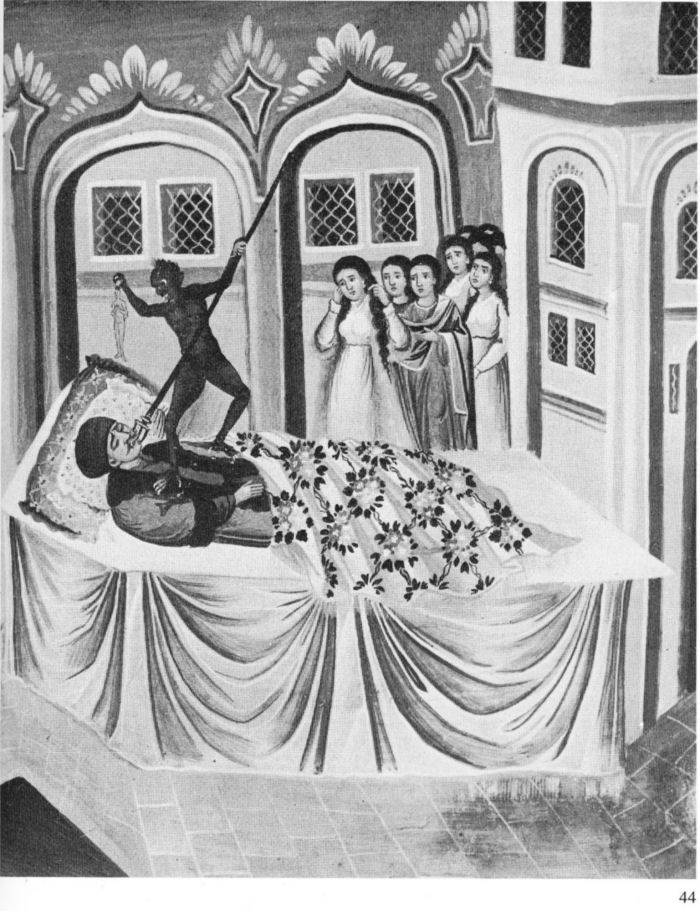
45. Preslav. Patleina monastery. Icon of St Theodore Stratelates, made up of twenty glazed ceramic tiles, each 11.5 cm. square. Basic colours are gold, light brown and greenish black. About AD 900. Preslav Museum.
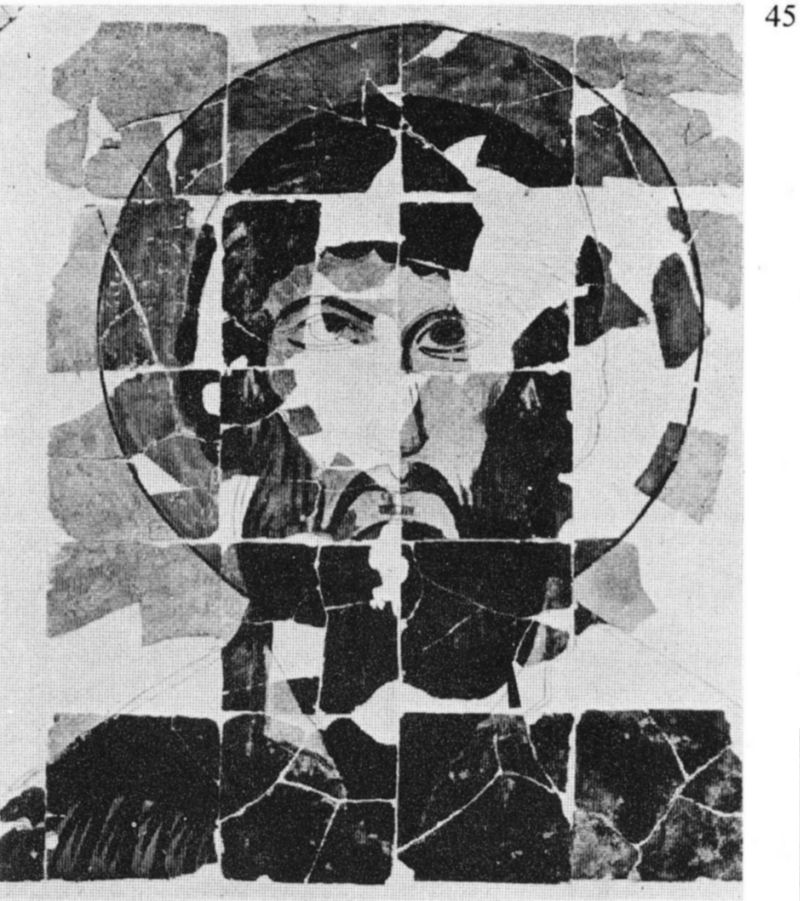
46. Icon of St Arsenius, fourteenth century. The colouring is an effective blend of shades of pink and red, set off by the white of the saint’s vestments and hair and beard. Monastery Museum, Rila.
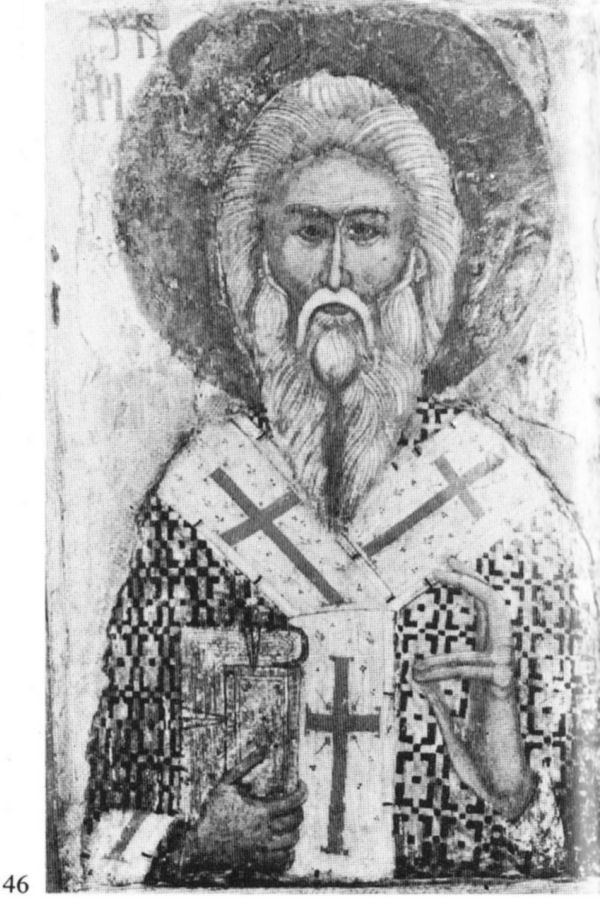
47. Icon of the Virgin and Child, from Nessebăr. Fourteenth century. Sofia: National Archaeological Museum.
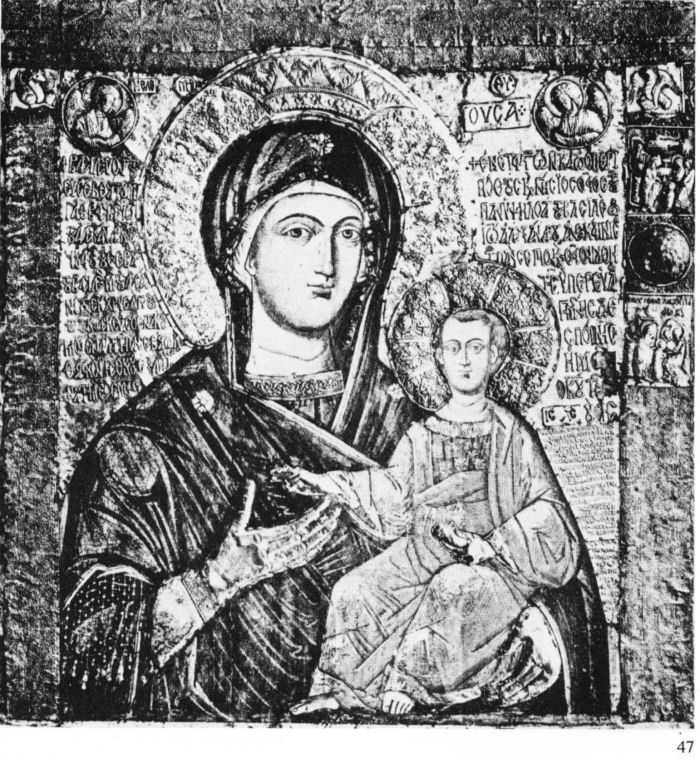
48. The Adoration of the Magi, from the personal Gospel book of Tsar Ivan Alexander, copied by the Monk Symeon in 1355-56. British Library, Add. MS. 39627. f. 10: on exhibition in the British Museum.
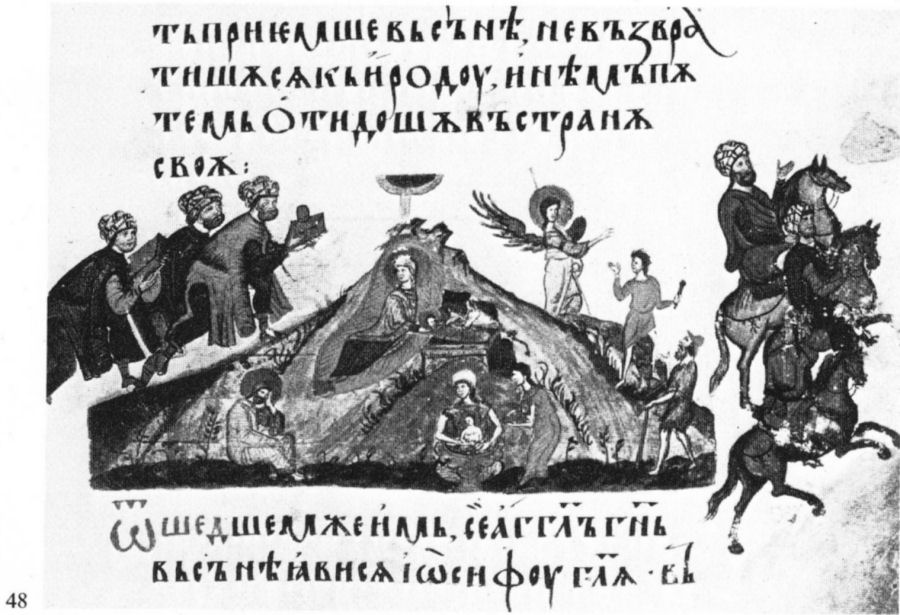
49. The conversion and baptism of the Russians. Miniature from the Slavonic recension of the chronicle of Constantine Manasses (died 1187). Copied 1344-45. Vatican Library.
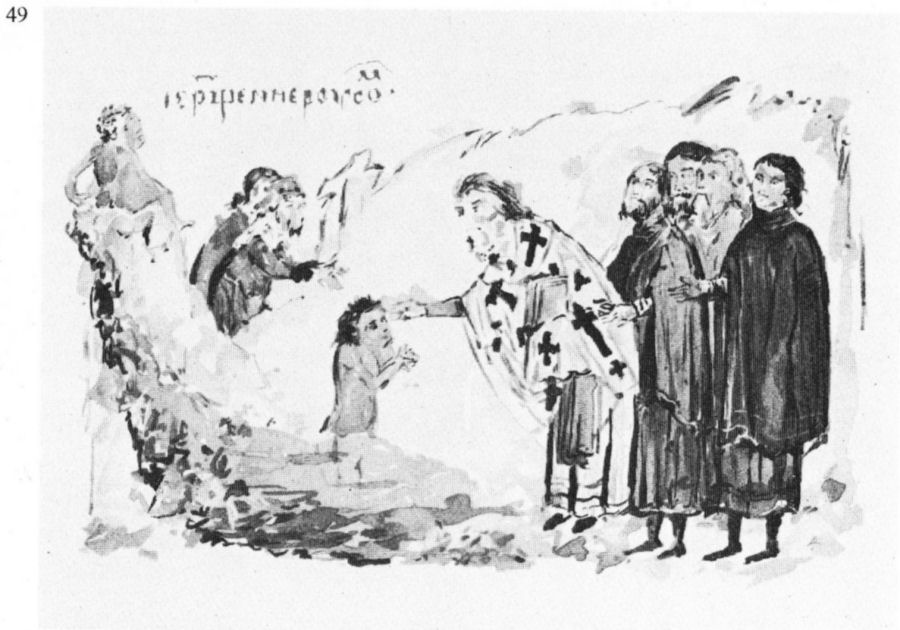
50. Illuminated page from the Gospels of Tsar Ivan Alexander. Above, the Ascension; below, Tsar Ivan Alexander converses with St Mark the Evangelist. British Museum.
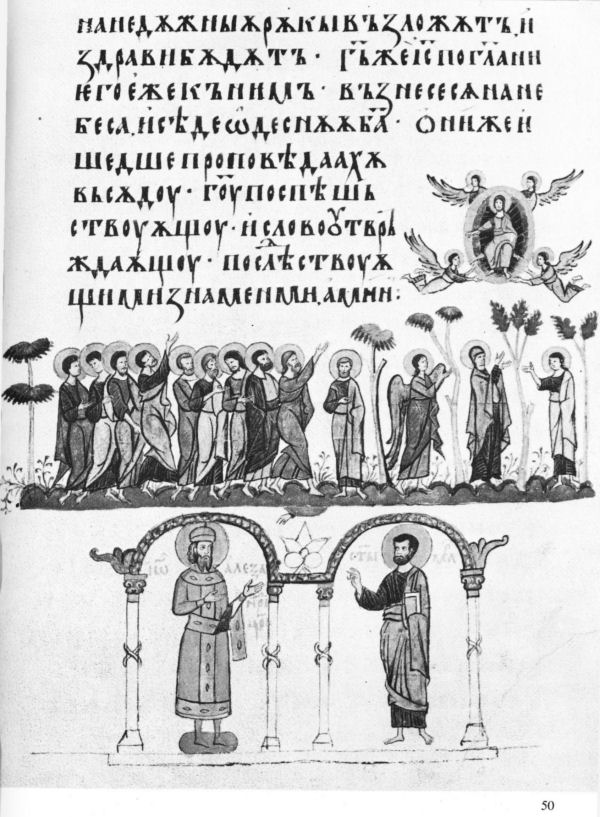
51. Carved wooden double door from Khrelyo’s Tower, in the Rila Monastery. About 1335. 1.22 m. x 2.03 m. Monastery Museum, Rila.
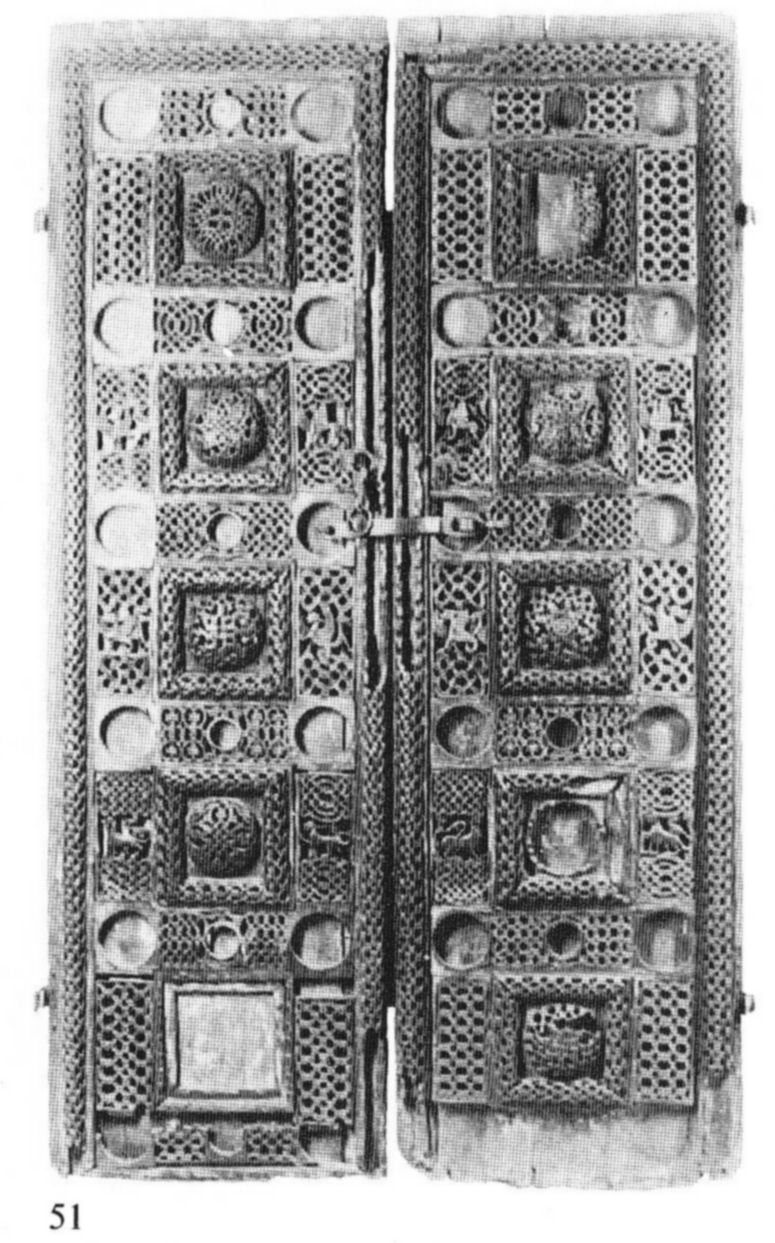
52. Gold belt tag, with inset stones framing a female figure. Fourteenth century. Found on the Tsarevets hill (acropolis), Great Tărnovo. Regional Historical Museum, Great Tărnovo.
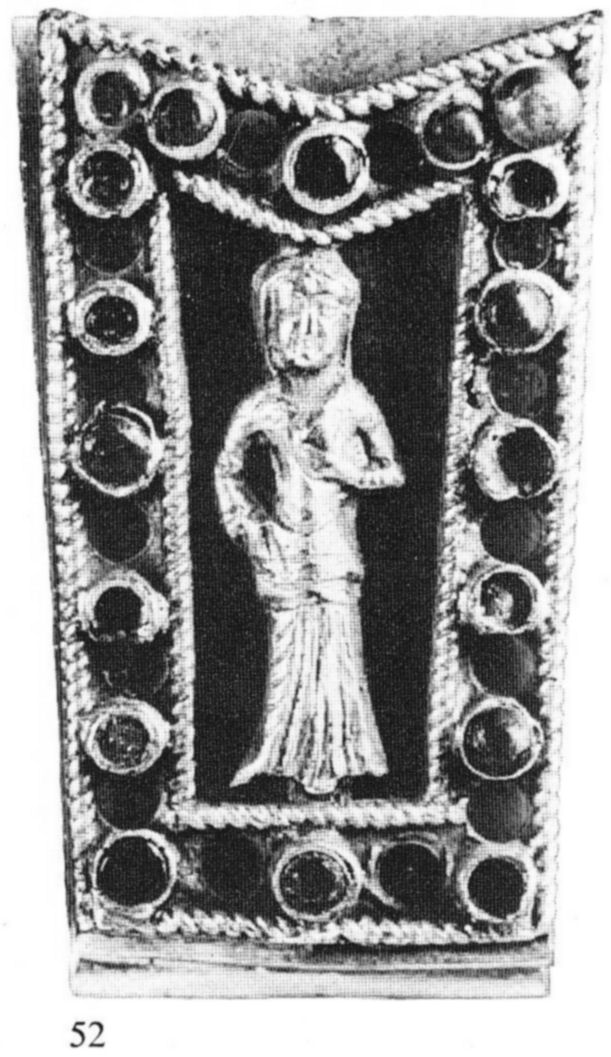
53. Gold belt buckle, with inset stones framing a winged dragon figure. Fourteenth century. From the Tsarevets hill. Regional Historical Museum, Great Tărnovo.
54. Medallion representing two lions. Bronze with enamel inlay. Fourteenth century. From the Tsarevets hill. Regional Historical Museum, Great Tărnovo.
198
![]()
55. Silver coin of Tsar Ivan Alexander, showing (obverse) the ruler with Prince Michael Assen, and (reverse) standing figure of Christ. This series was struck between 1331 and 1355. Average diameter 20 mm.; average weight between 1.30 and 1.75 gr. Barber Institute of Fine Arts, University of Birmingham.
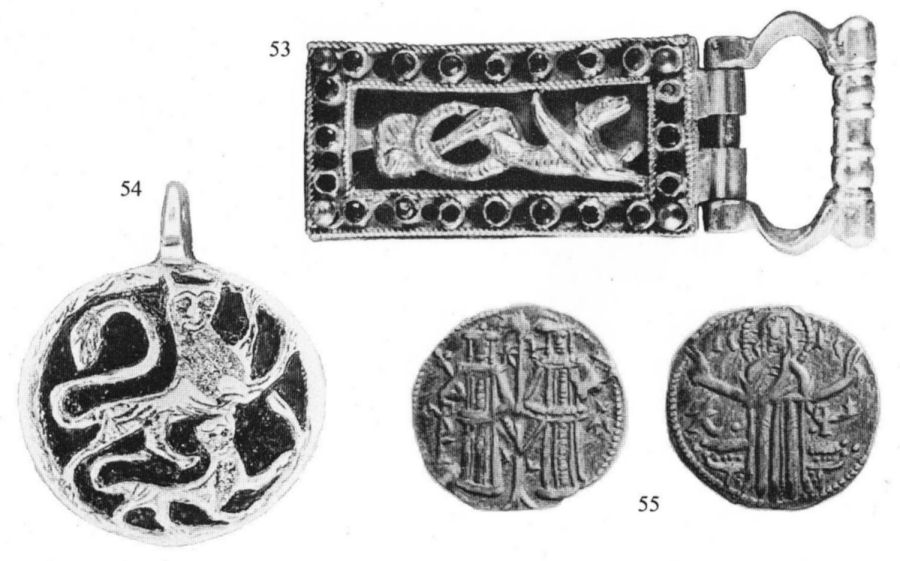
56. Shallow bowl in sgraffito ware, found on Tsarevets acropolis. Depicted are two fantastic heraldic beasts, sharing a single head. Thirteenth-fourteenth century. Diameter 34 cm. Regional Historical Museum, Great Tărnovo.
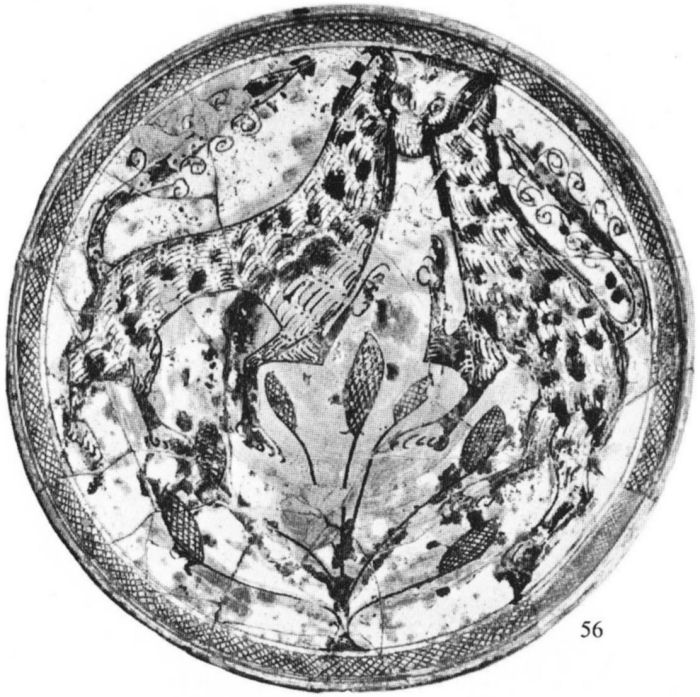
57. The carved wooden ceiling of the Daskalov House in Tryavna, a masterpiece of the Tryavna school of carving. Incorporating a symbolic depiction of the July sun, the ceiling dates from 1808.
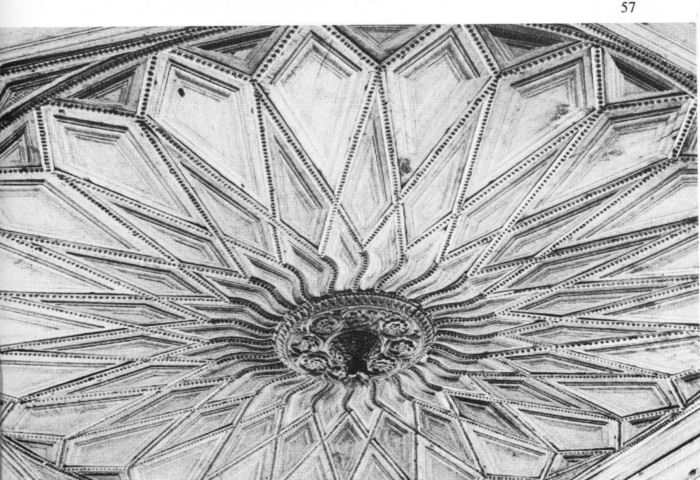
58. The Fall: Adam and Eve being expelled by the angel from the Garden of Eden. Part of the Little Iconostasis in the church of the Rozhen monastery. Height of the angel 14 cm. Box wood. Seventeenth century.
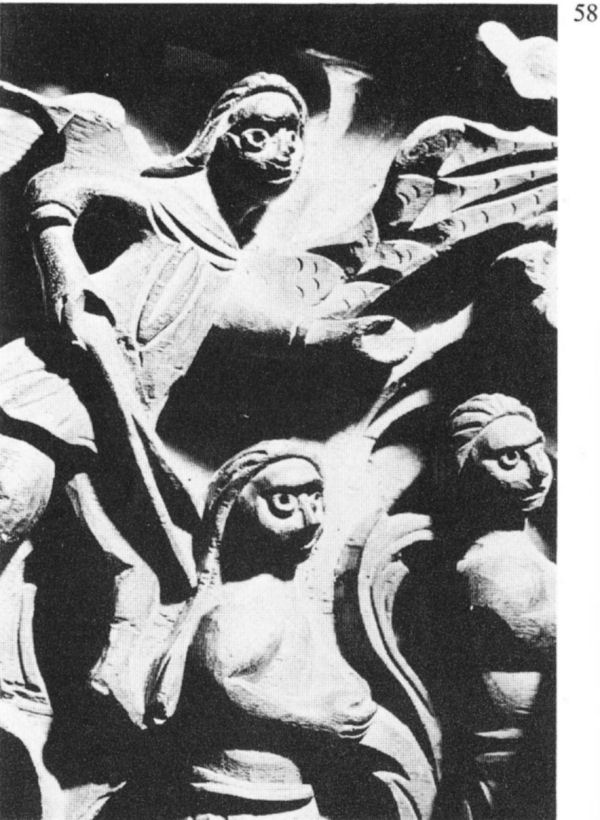
59. Detail from the scene of Abraham entertaining the Angels. Another section from the Little Iconostasis at Rozhen. Height of Abraham’s figure 15 cm.
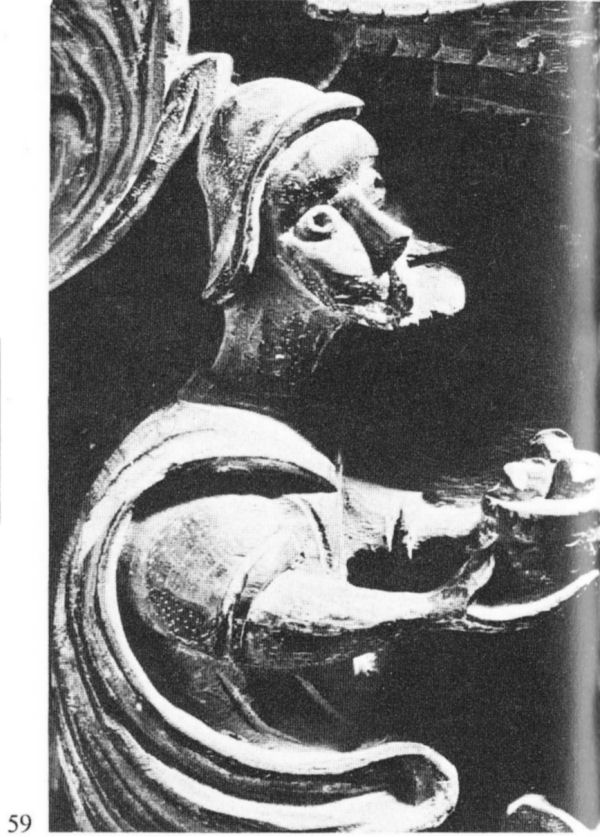
60. The Virgin and Child. Part of the iconostasis in the semi-underground church of the Virgin at Pazarjik, dating from 1837. This iconostasis is a masterpiece of the craftsmen of the Debar school.
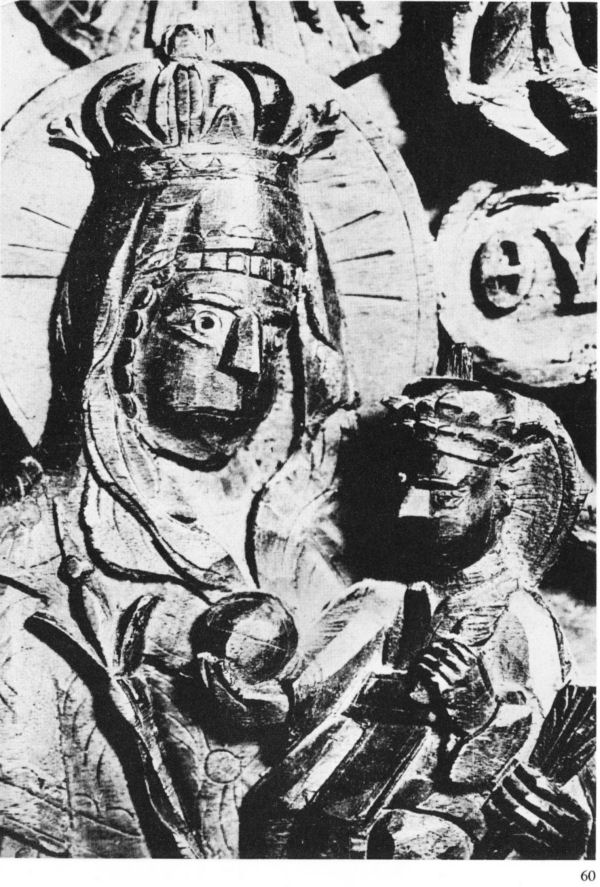
61. Kukeri dancers and mummers. Their fantastic costume, and the fertility rites which the Kukeri groups celebrate, are thought to derive ultimately from Thracian times.
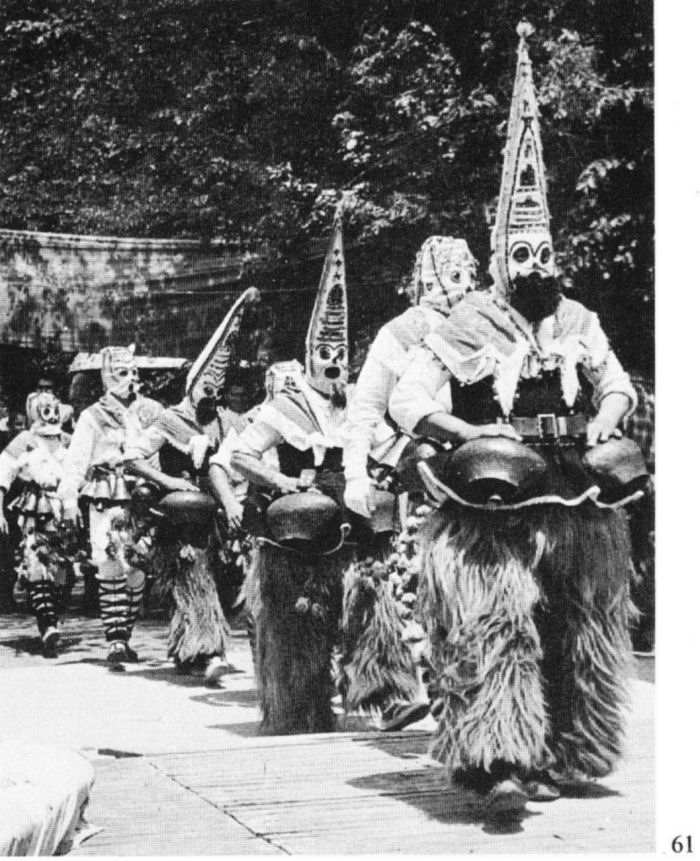
62. The rebeck player - a type of traditional village musician still frequently encountered in the Balkan country-side.
